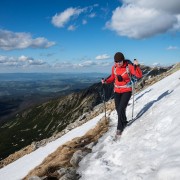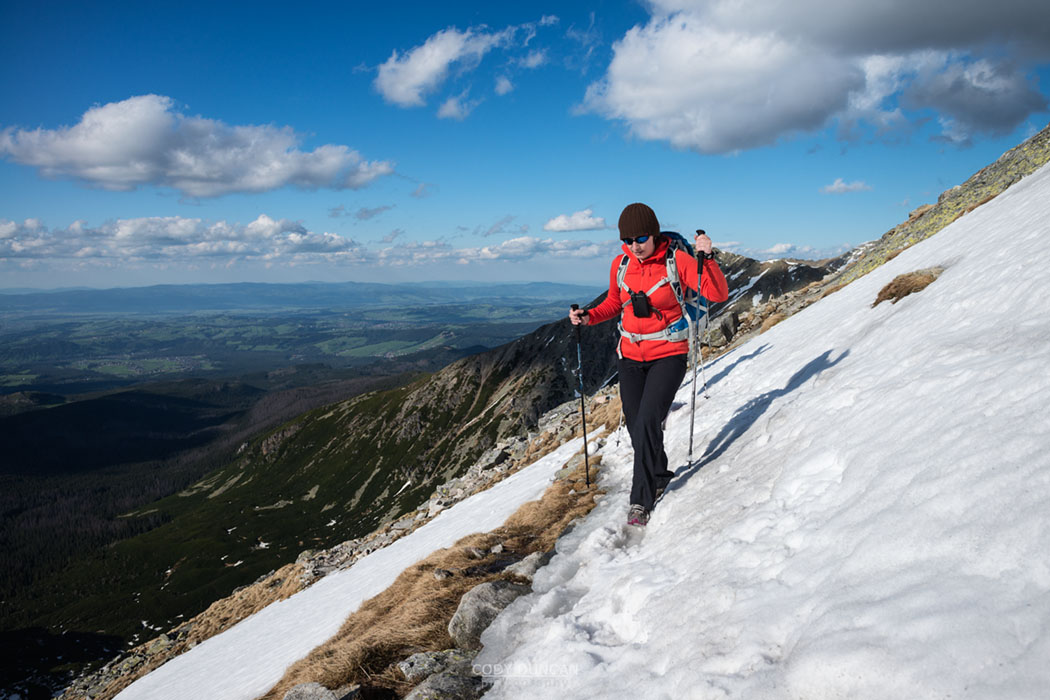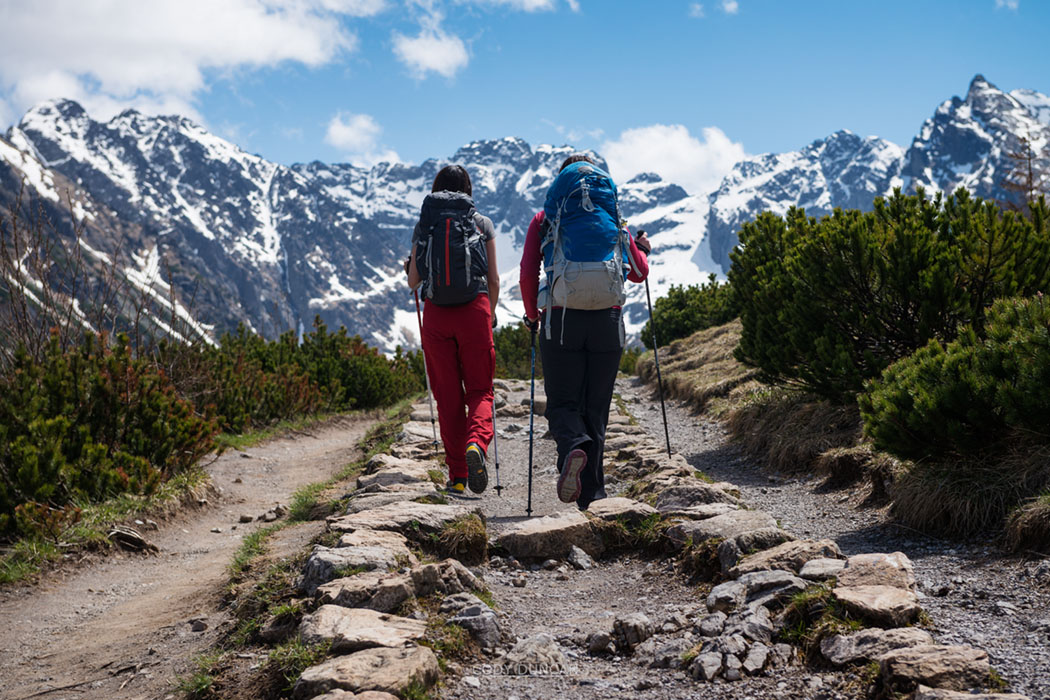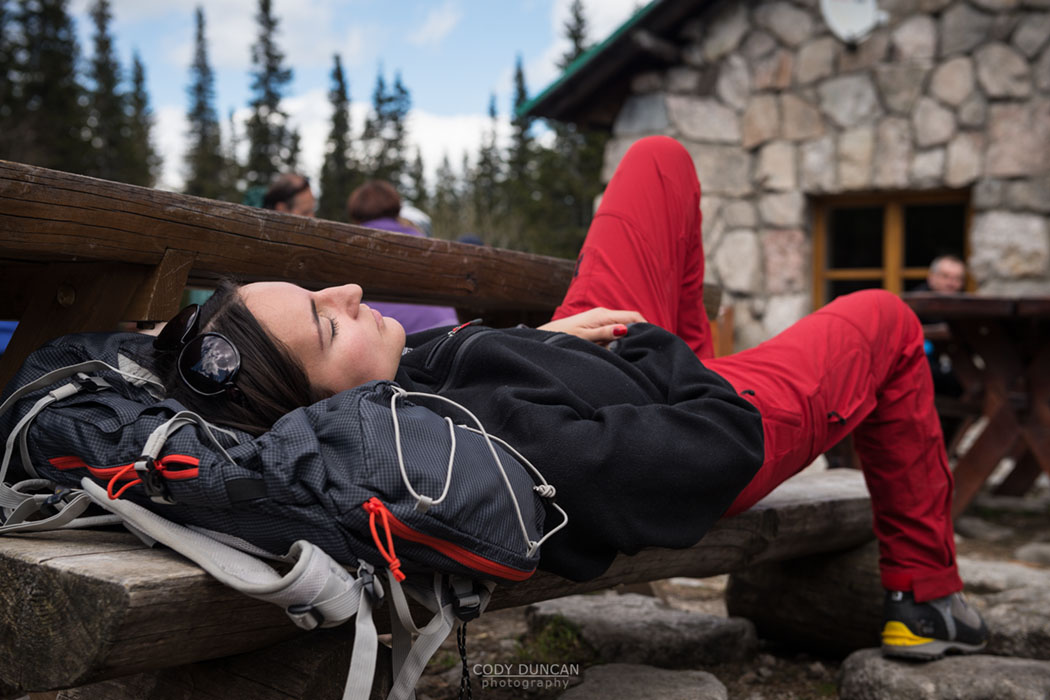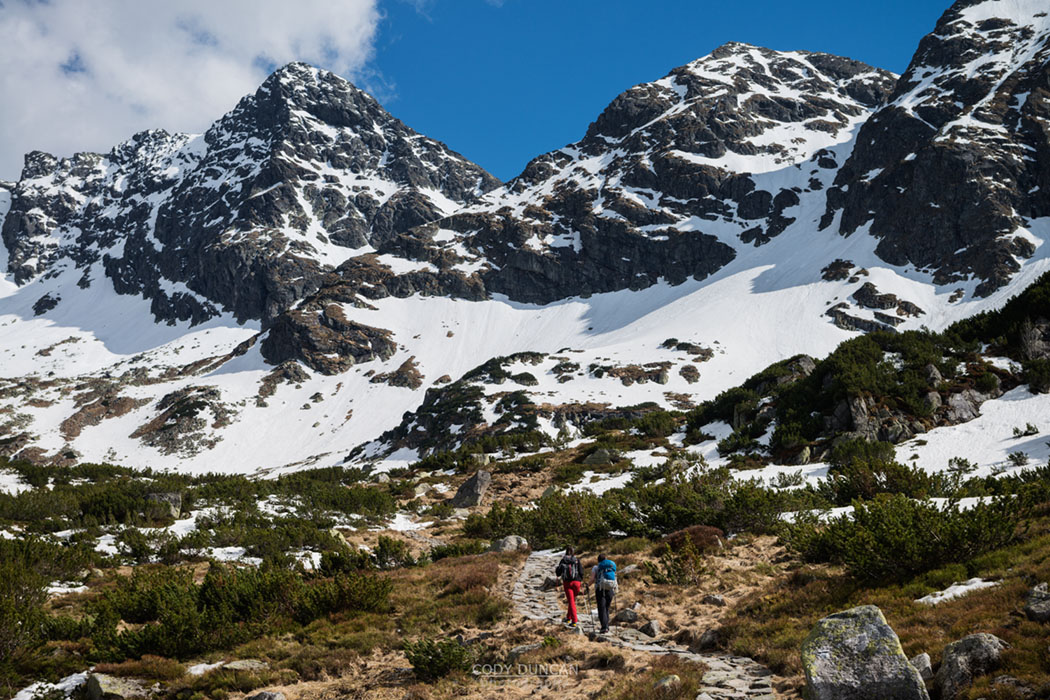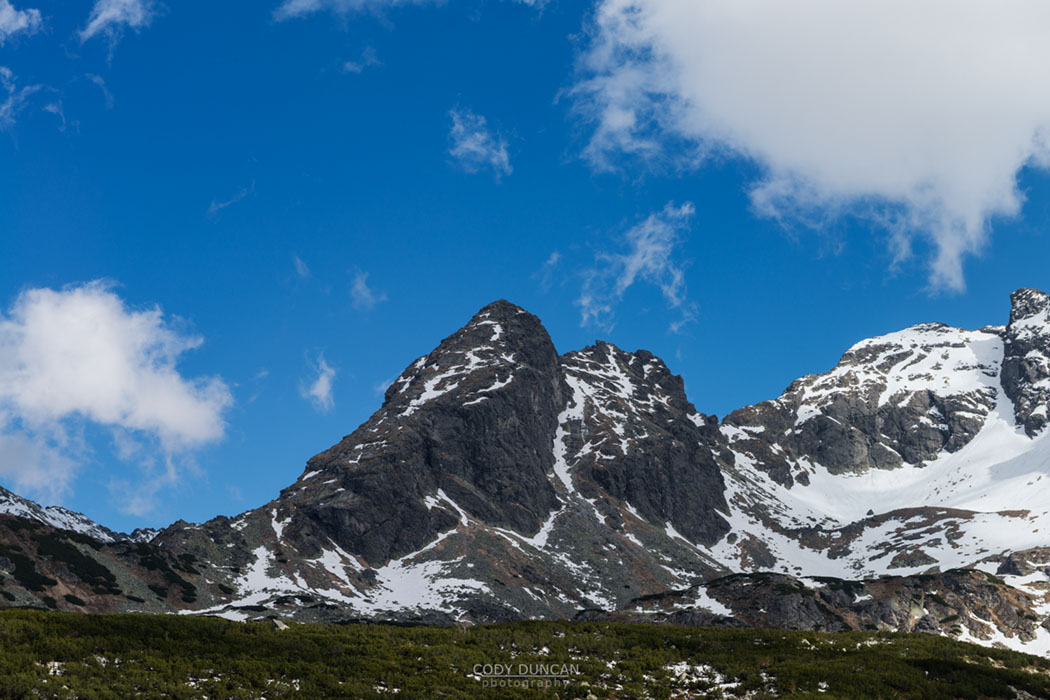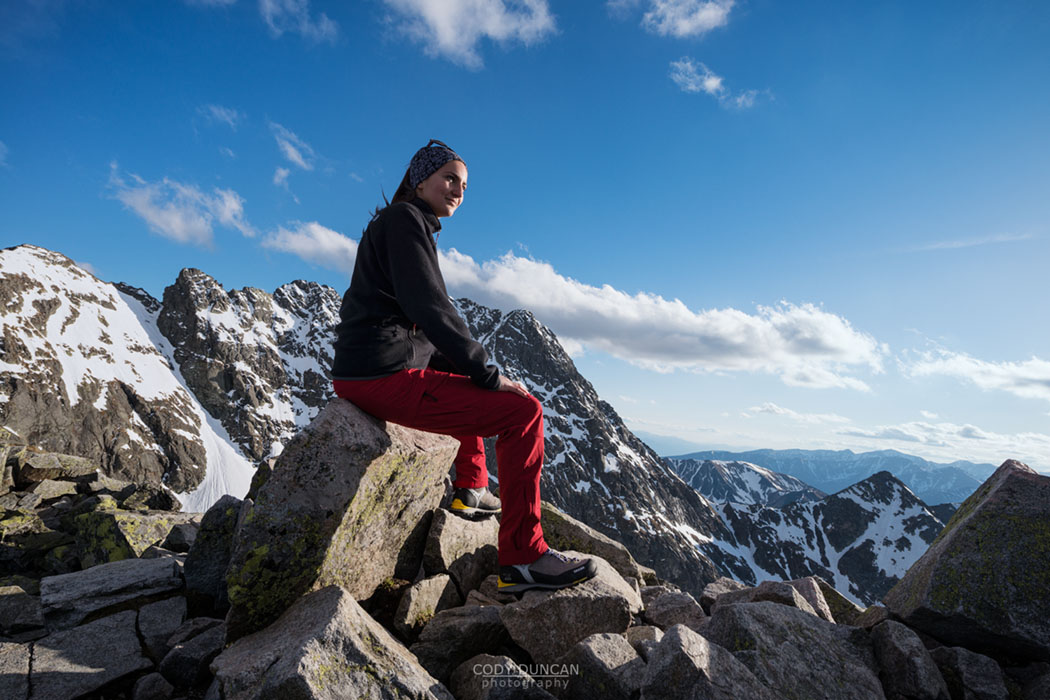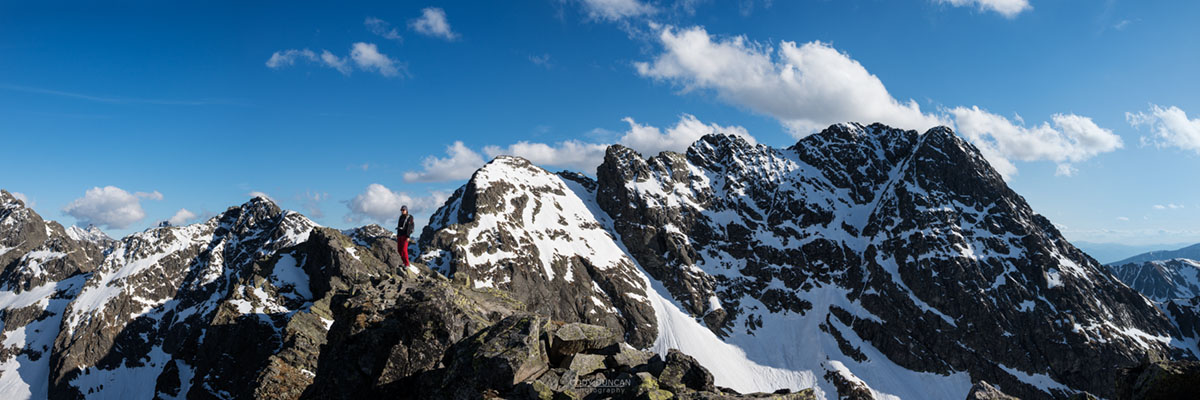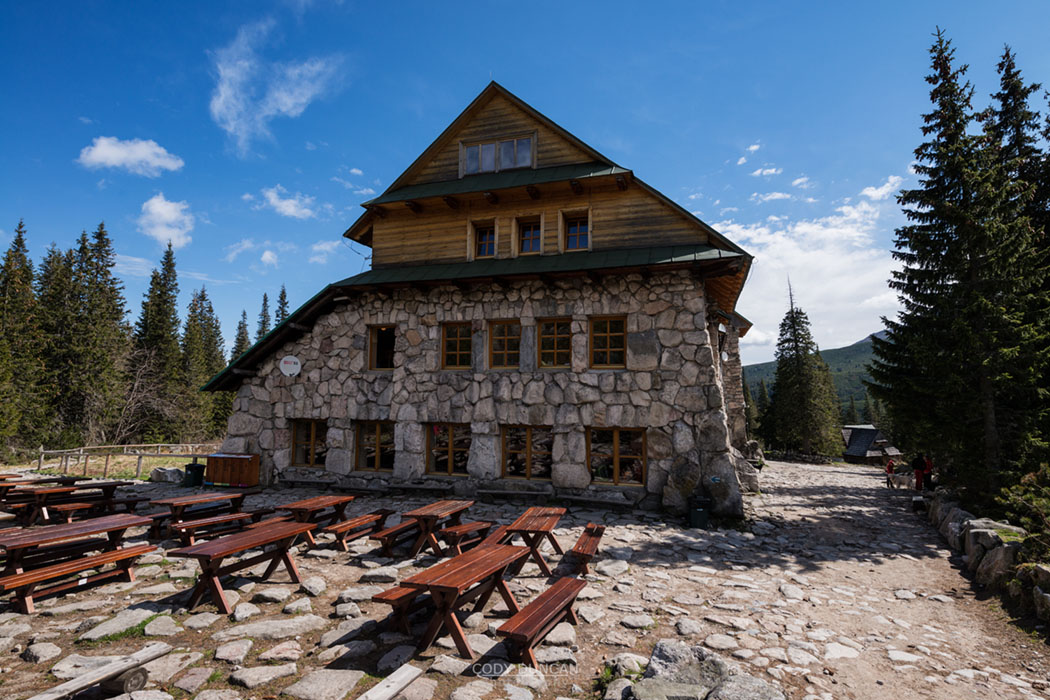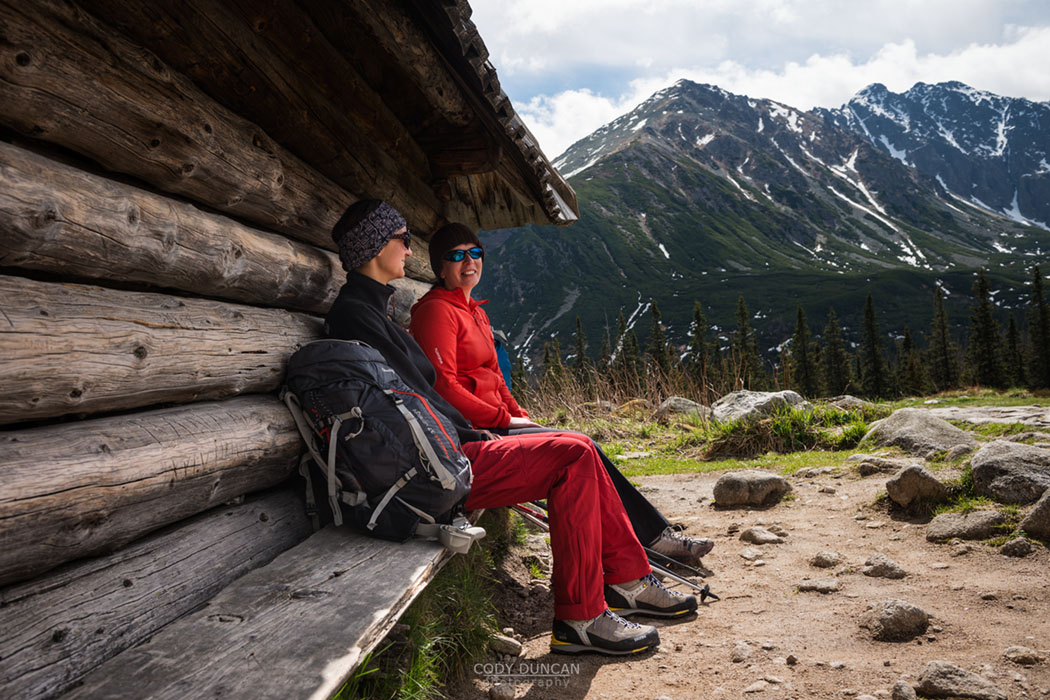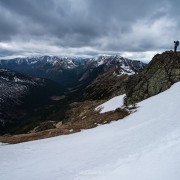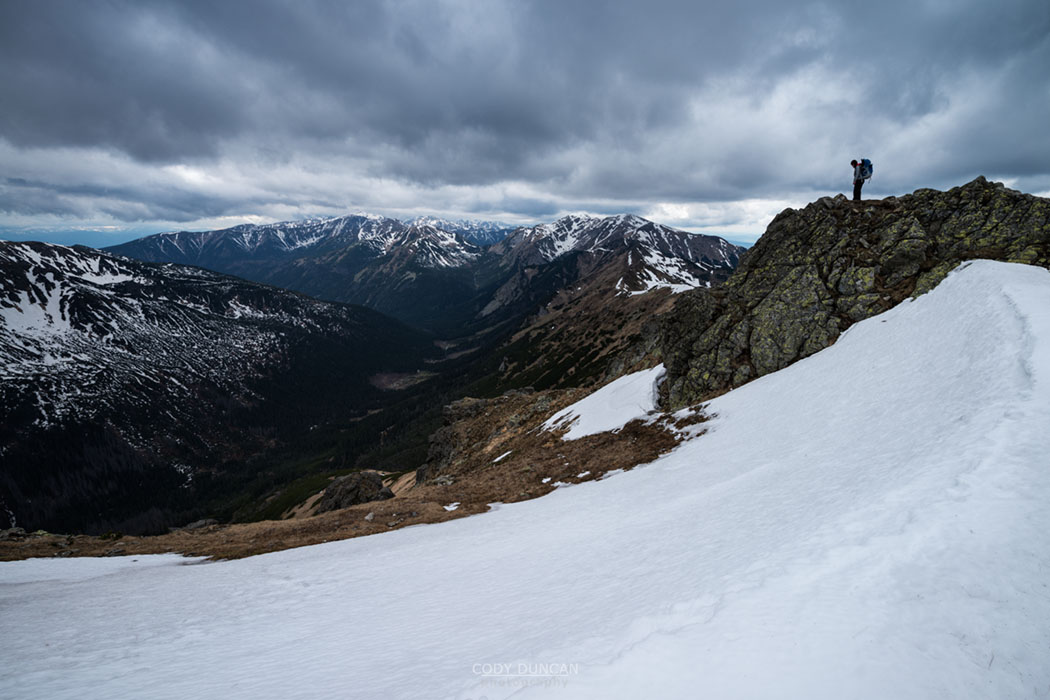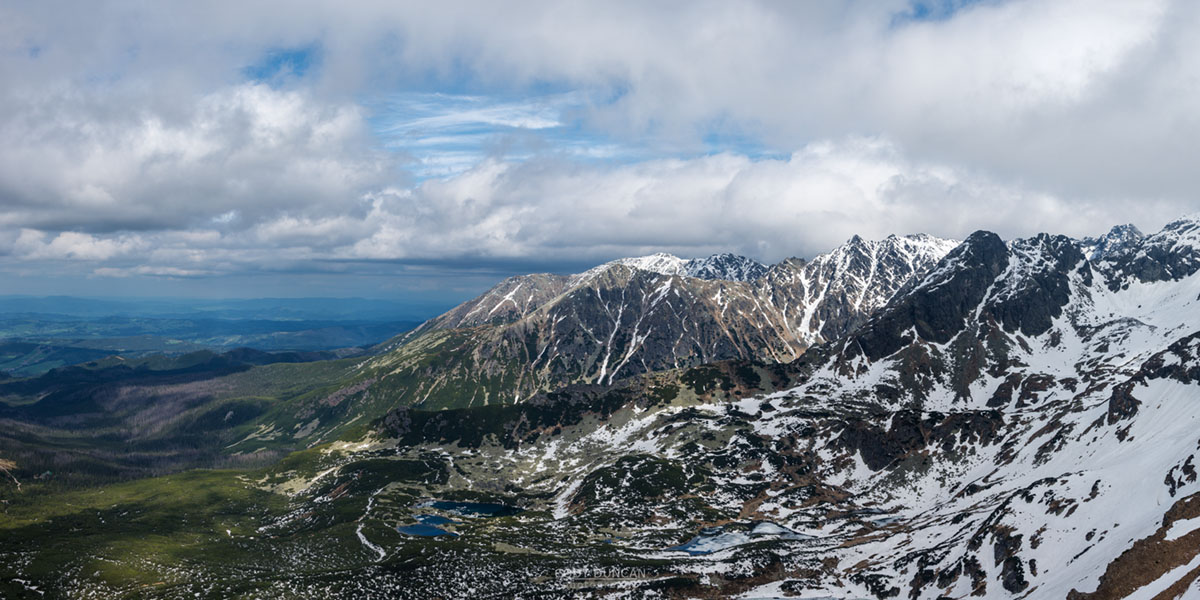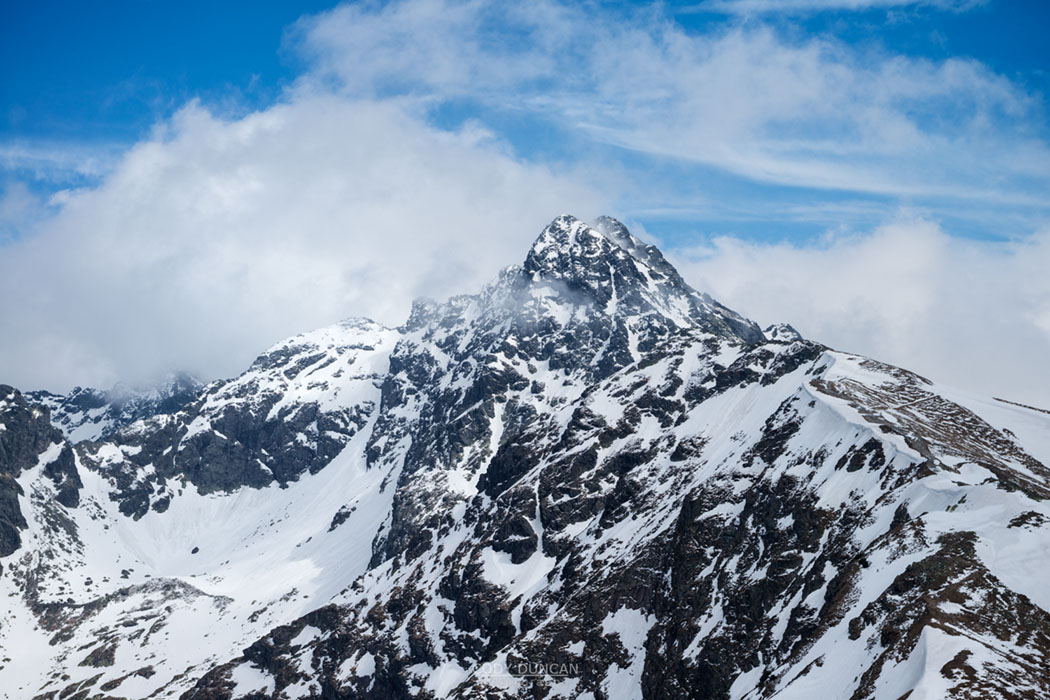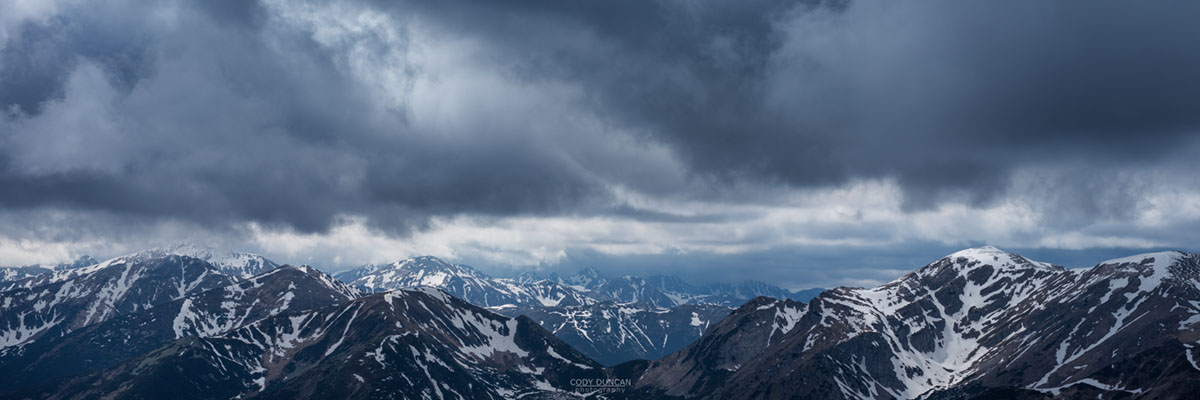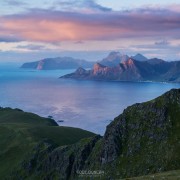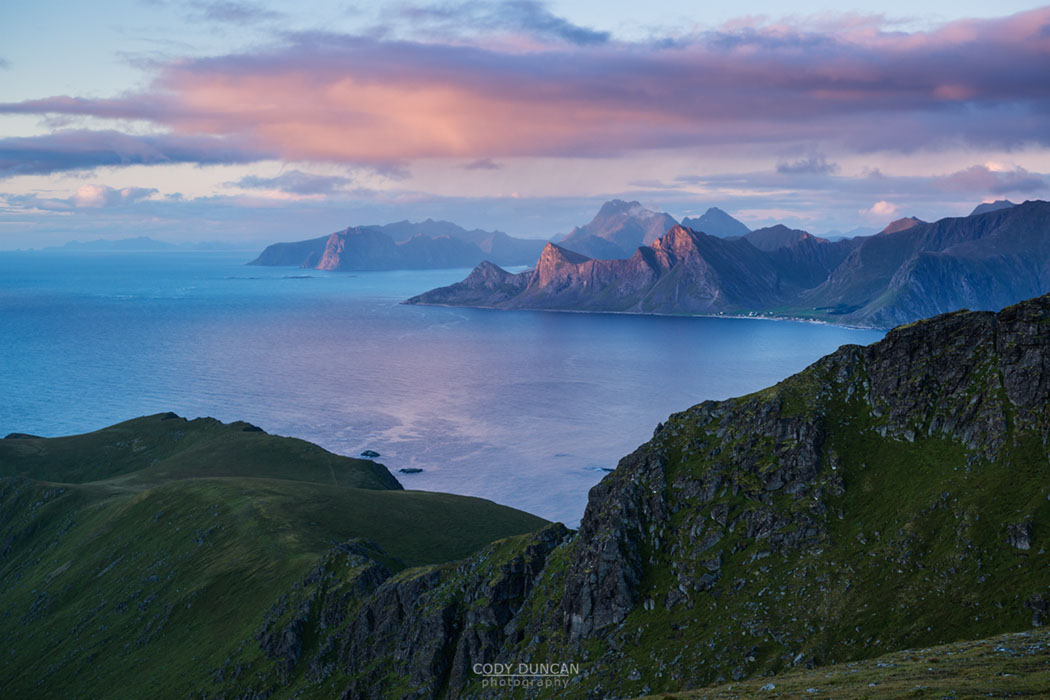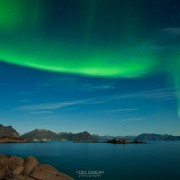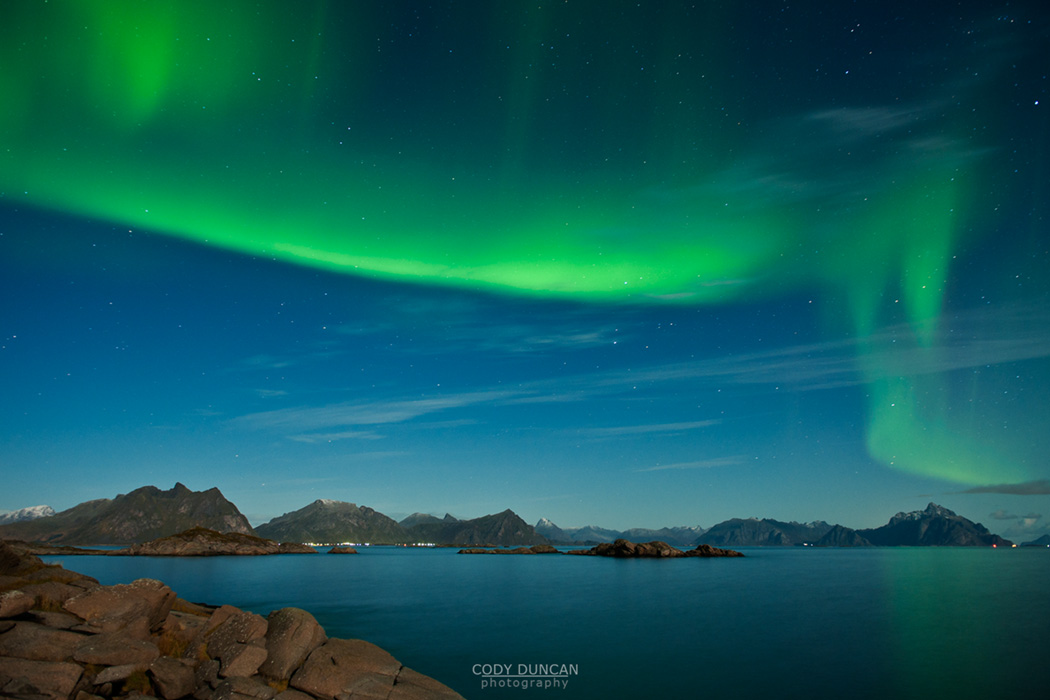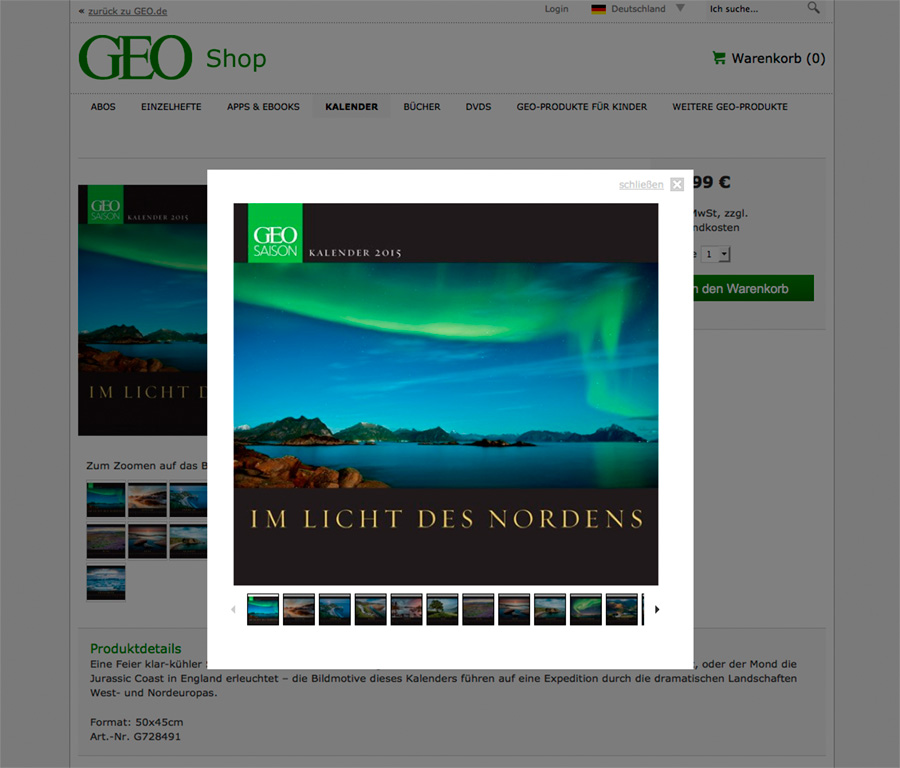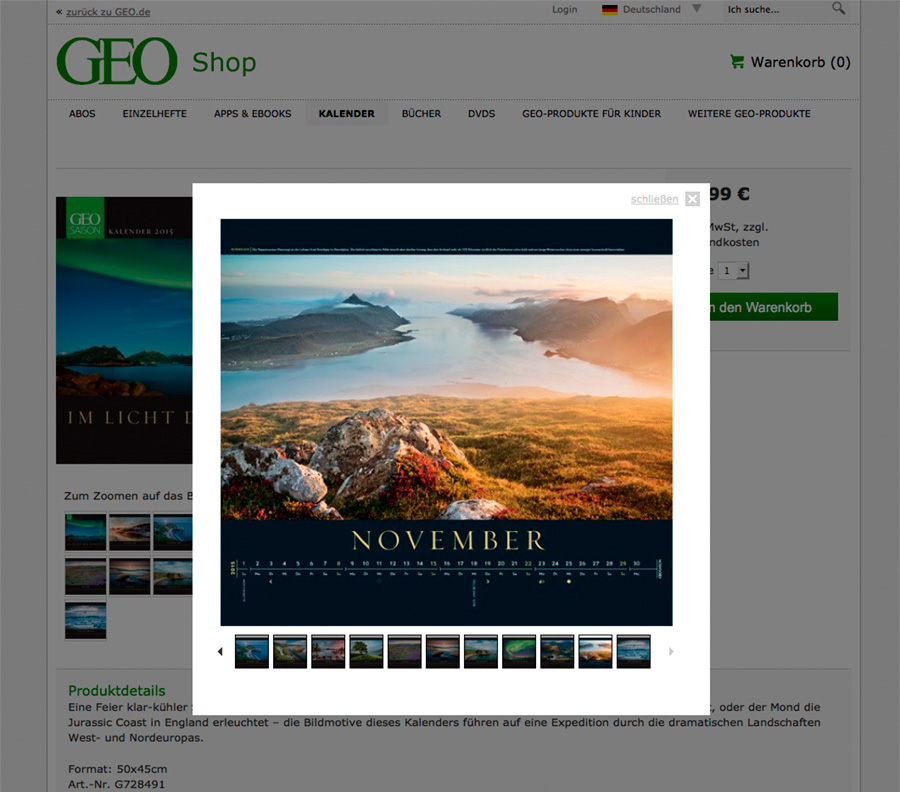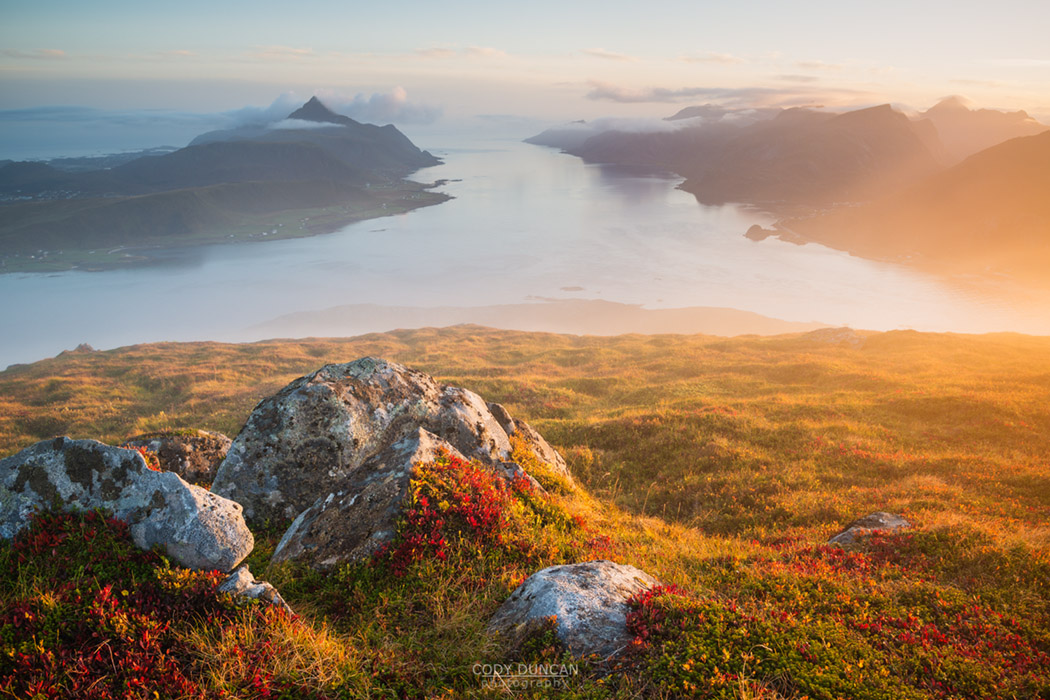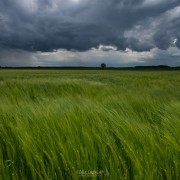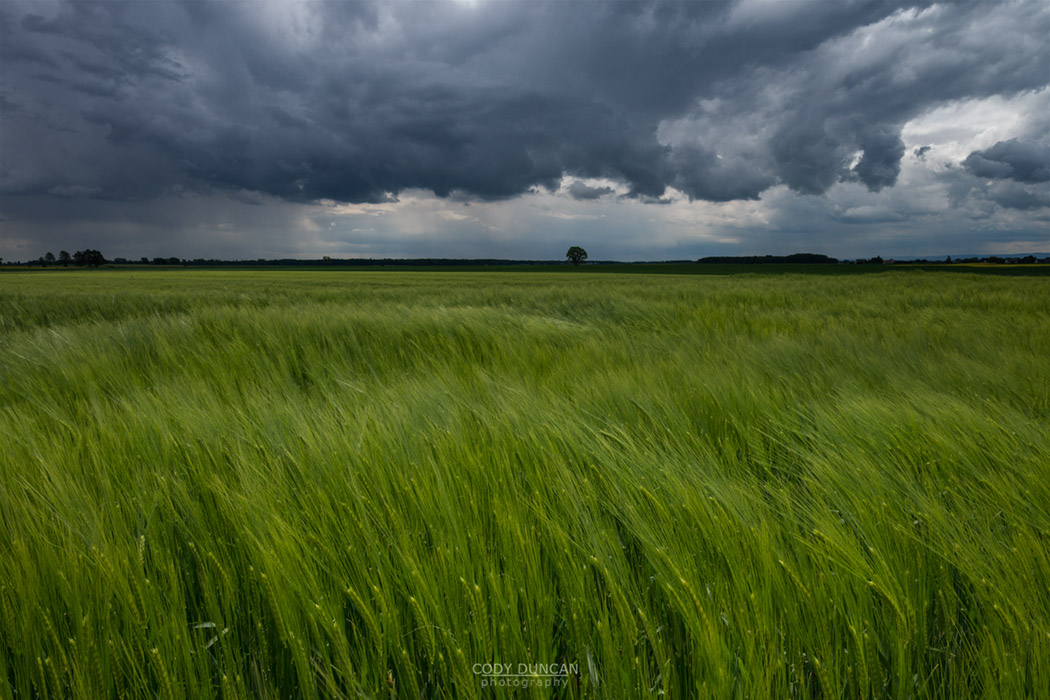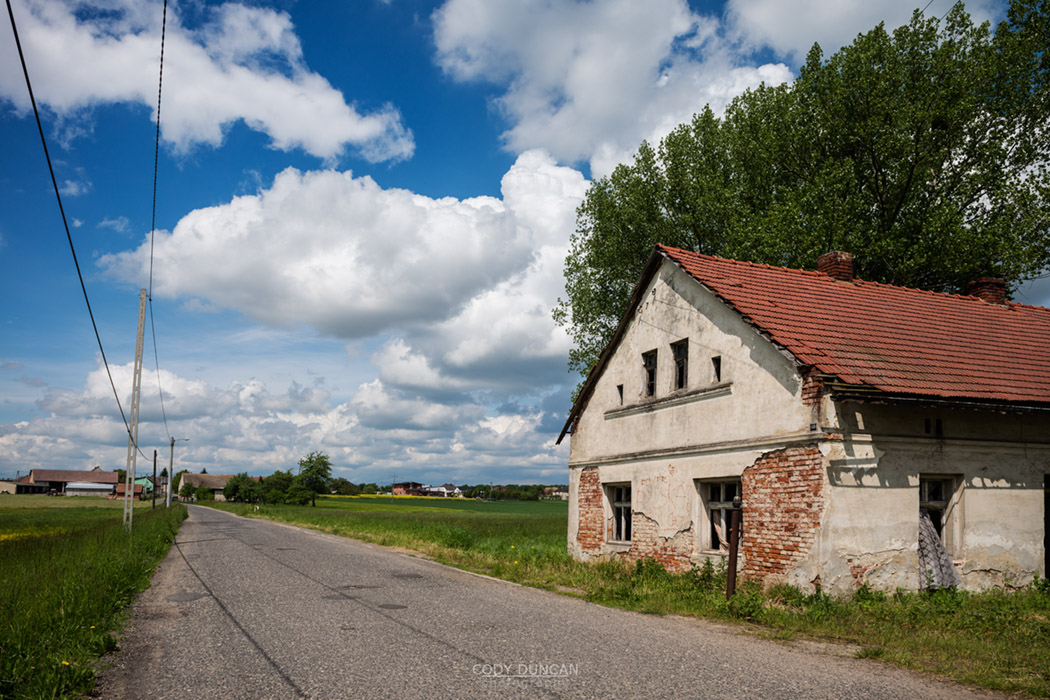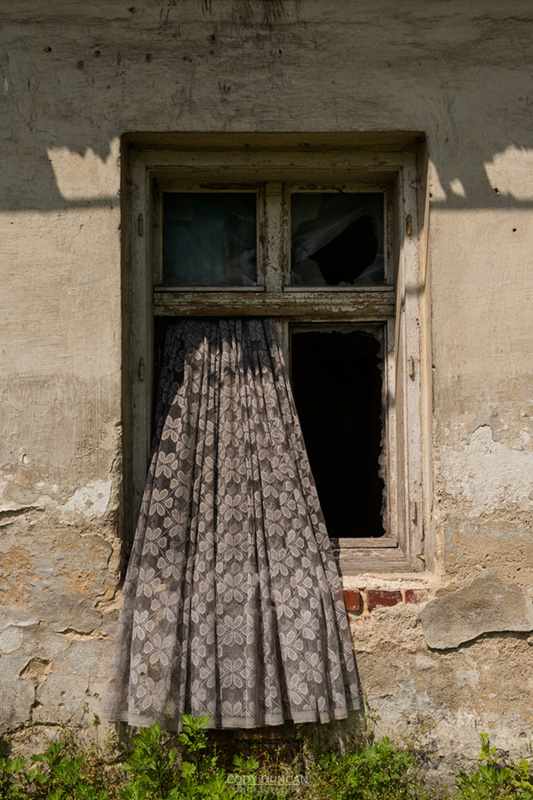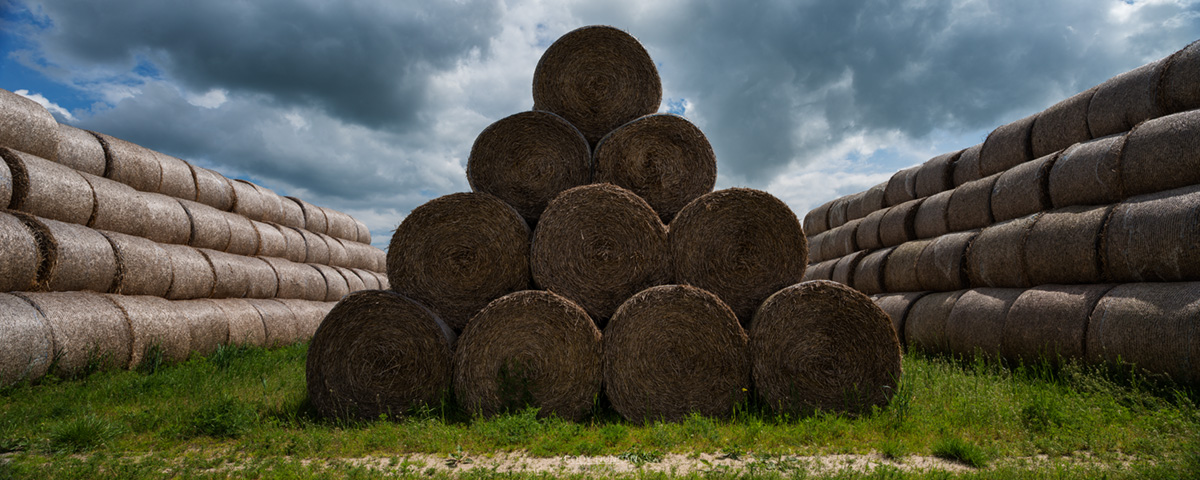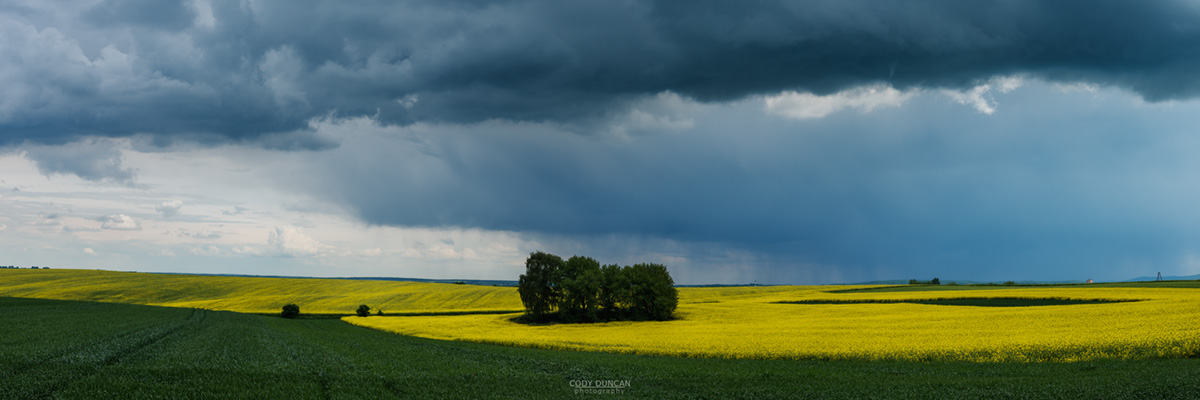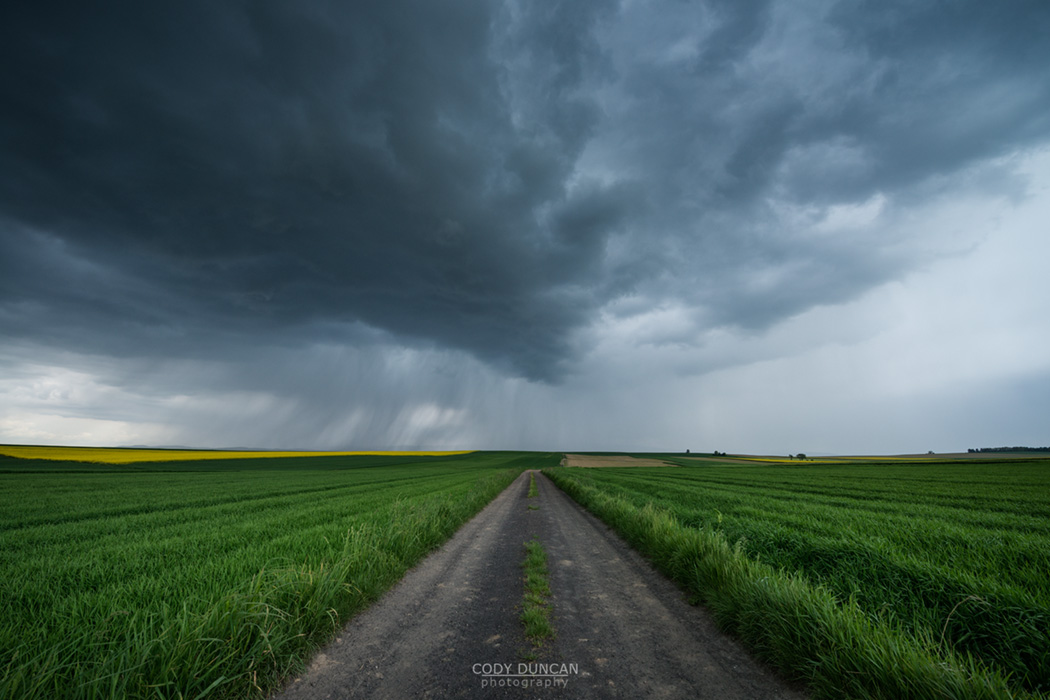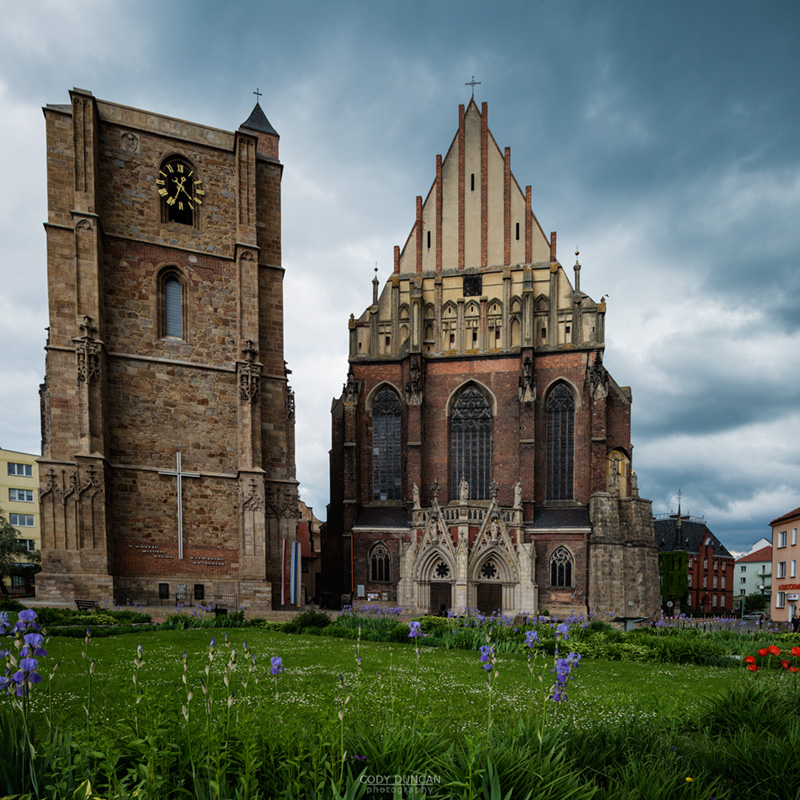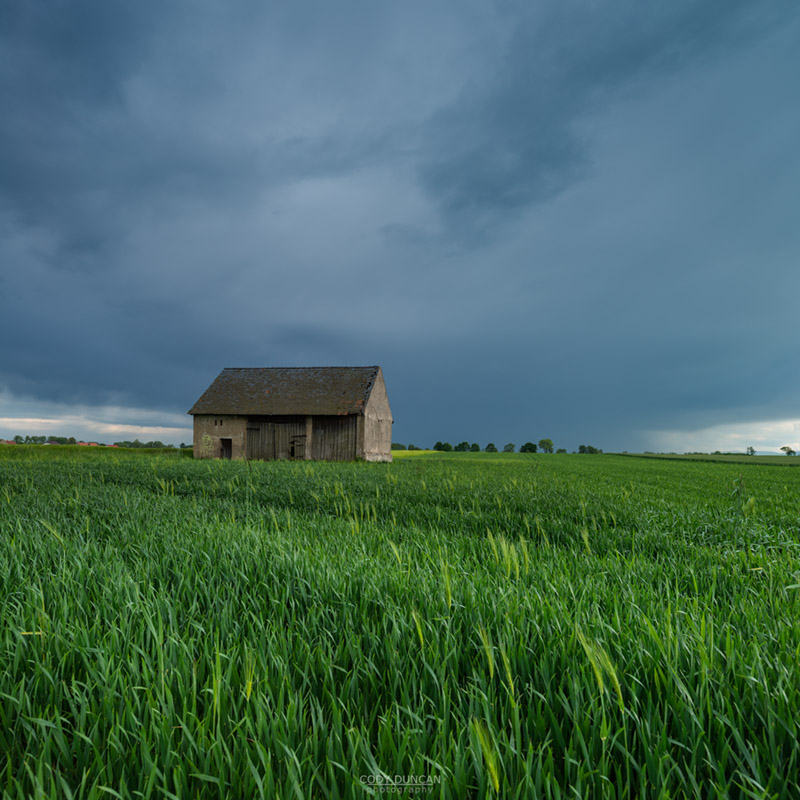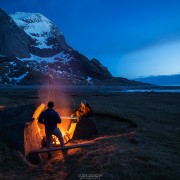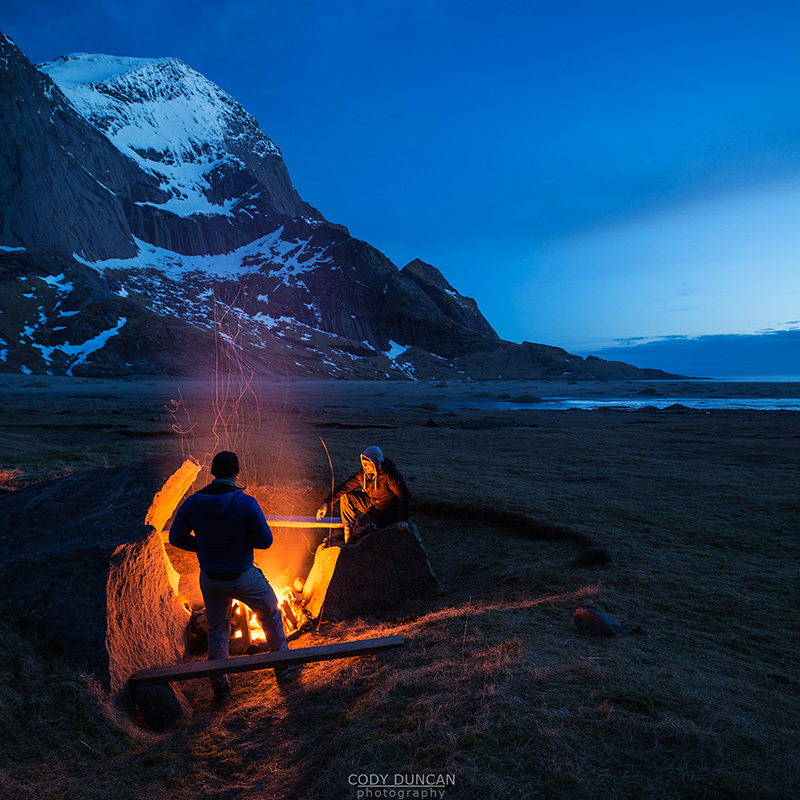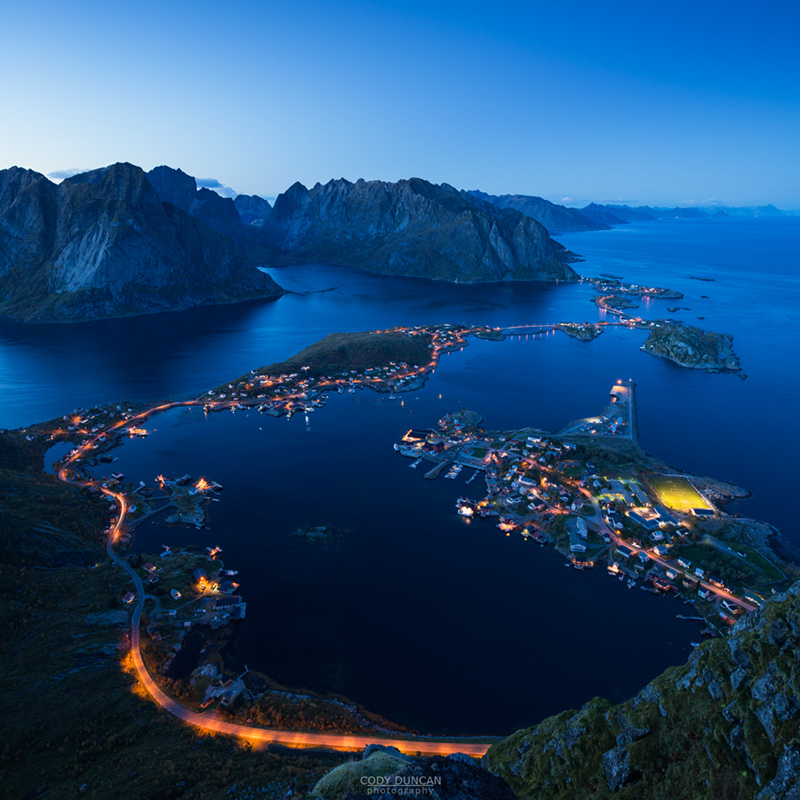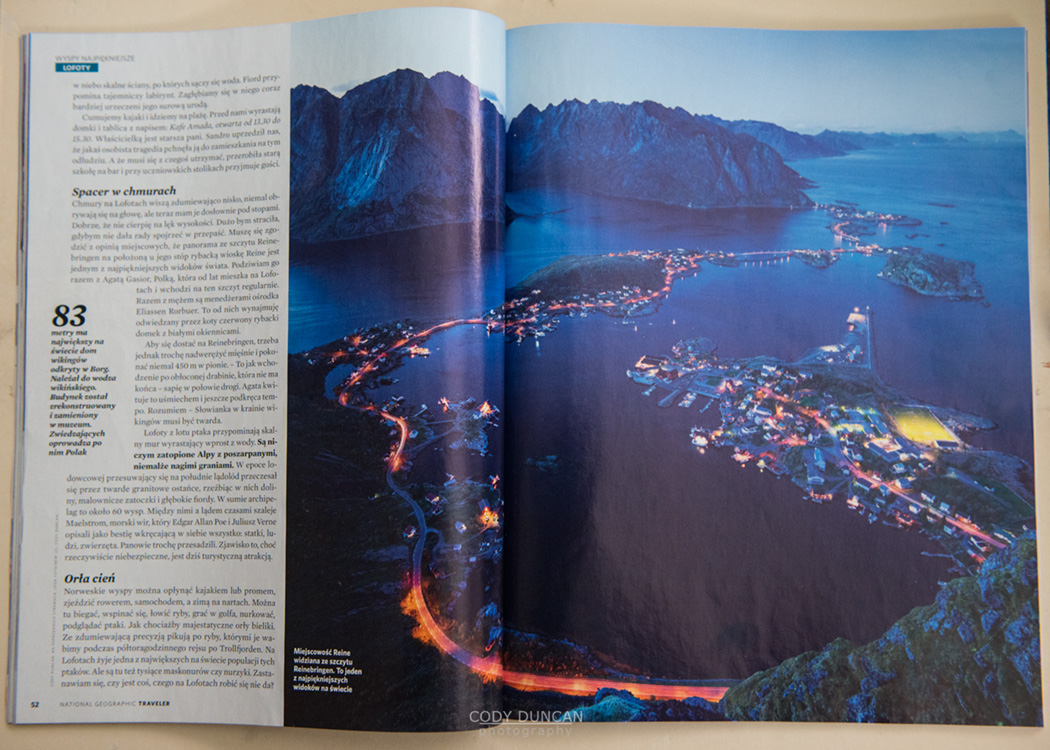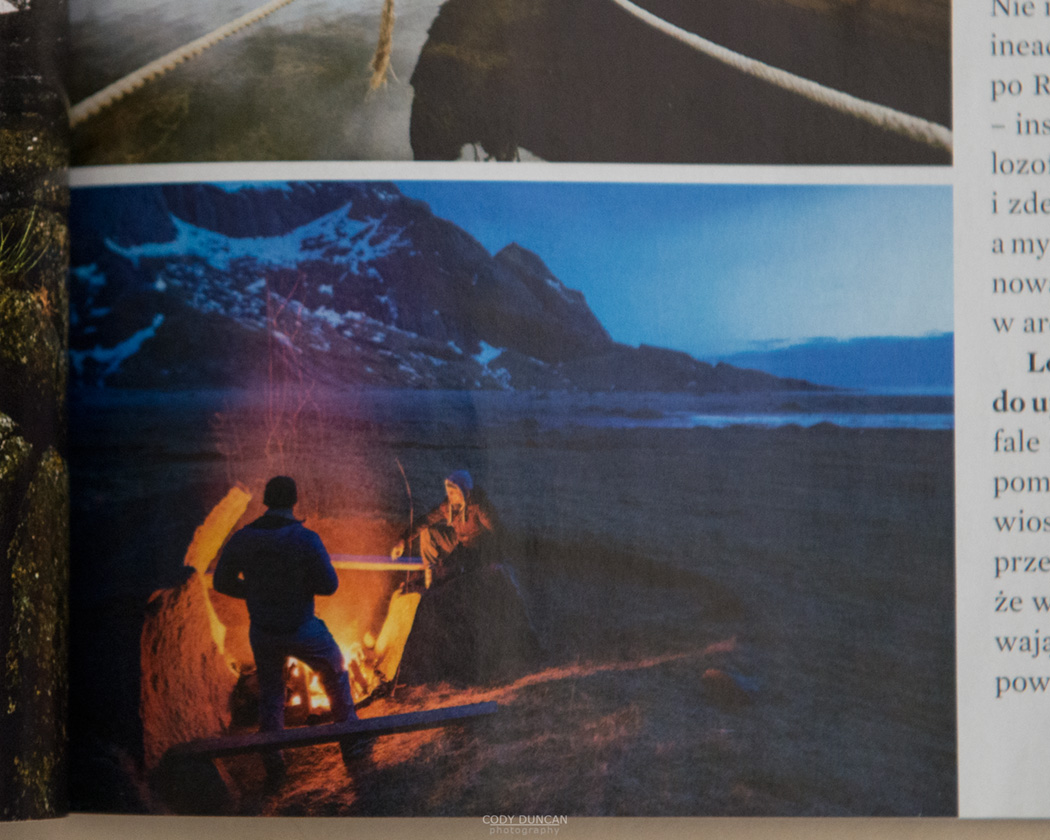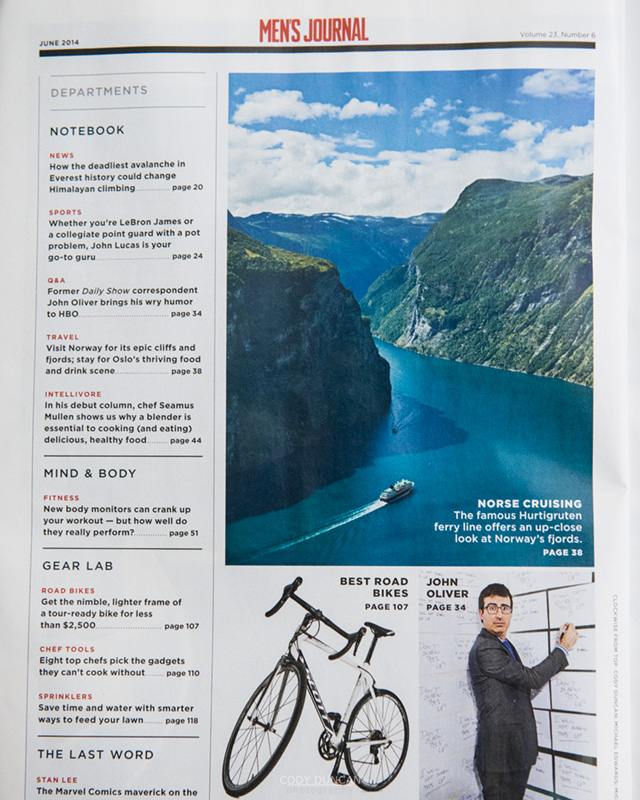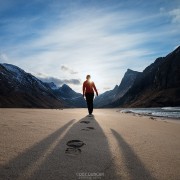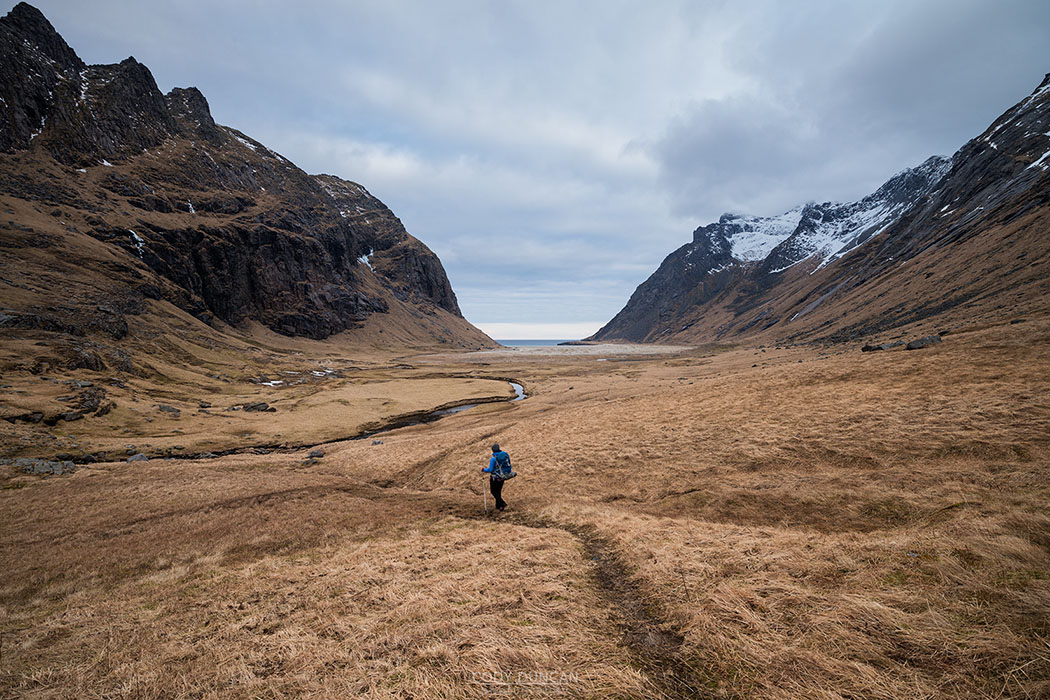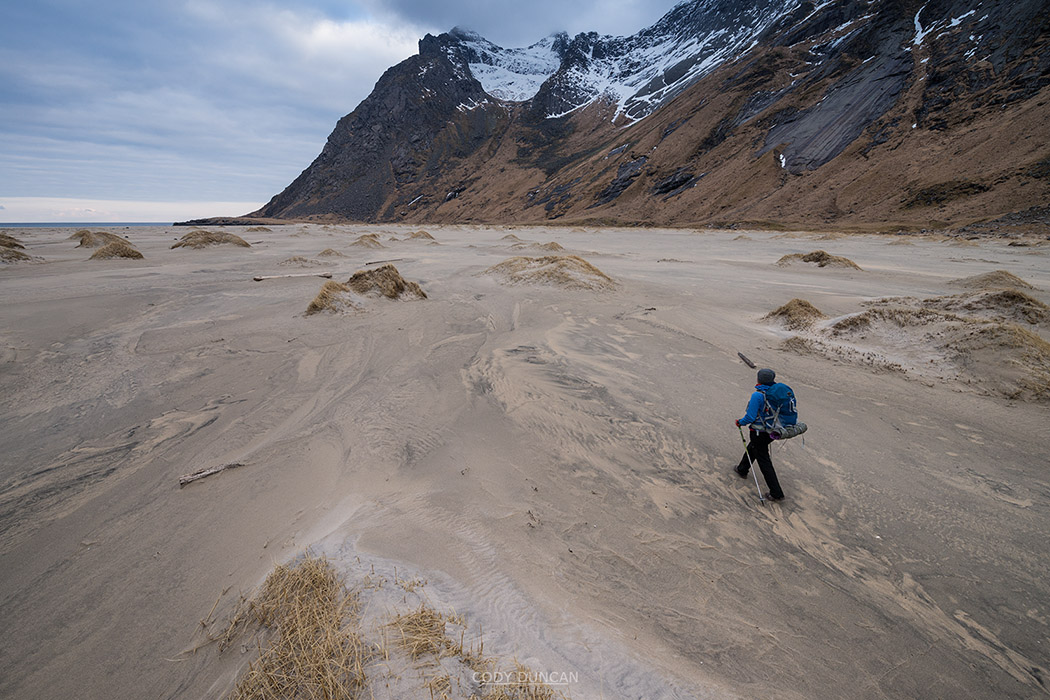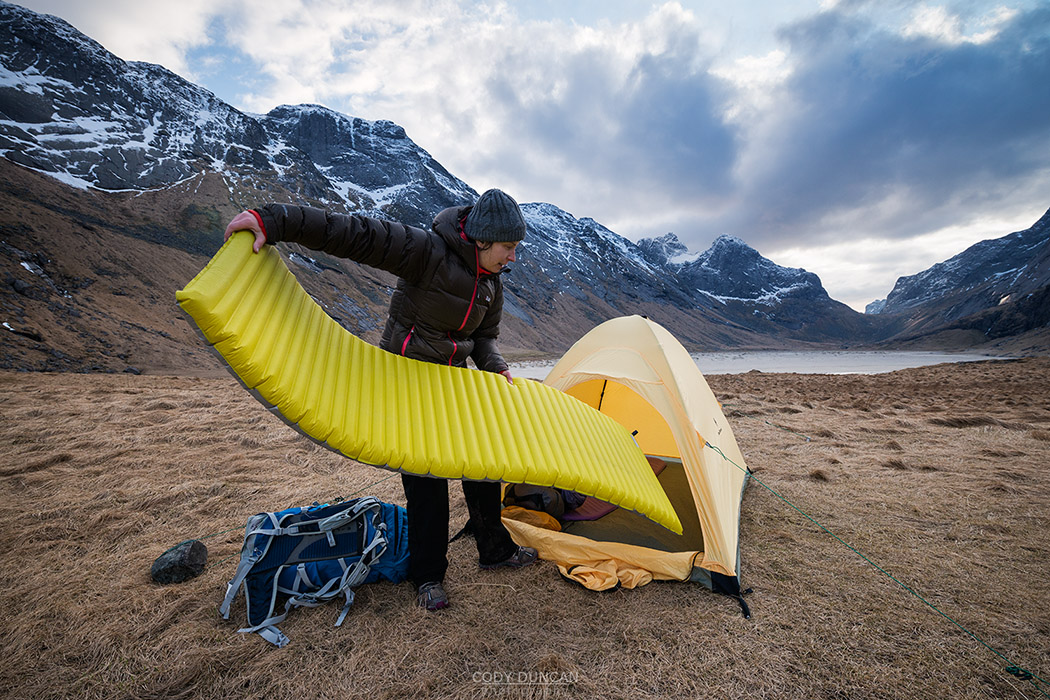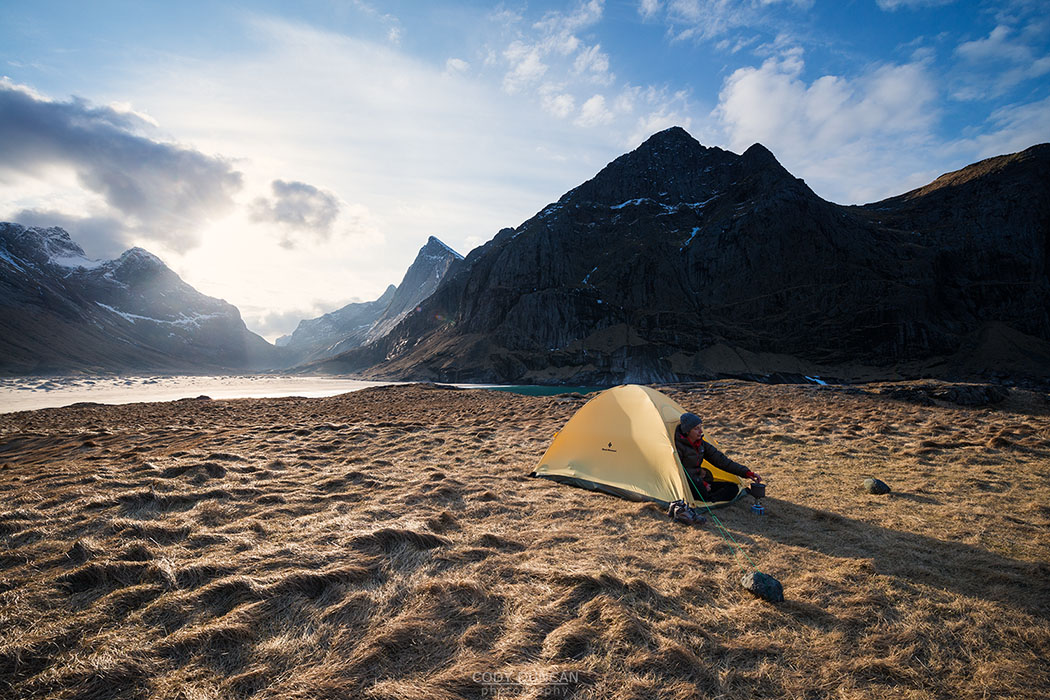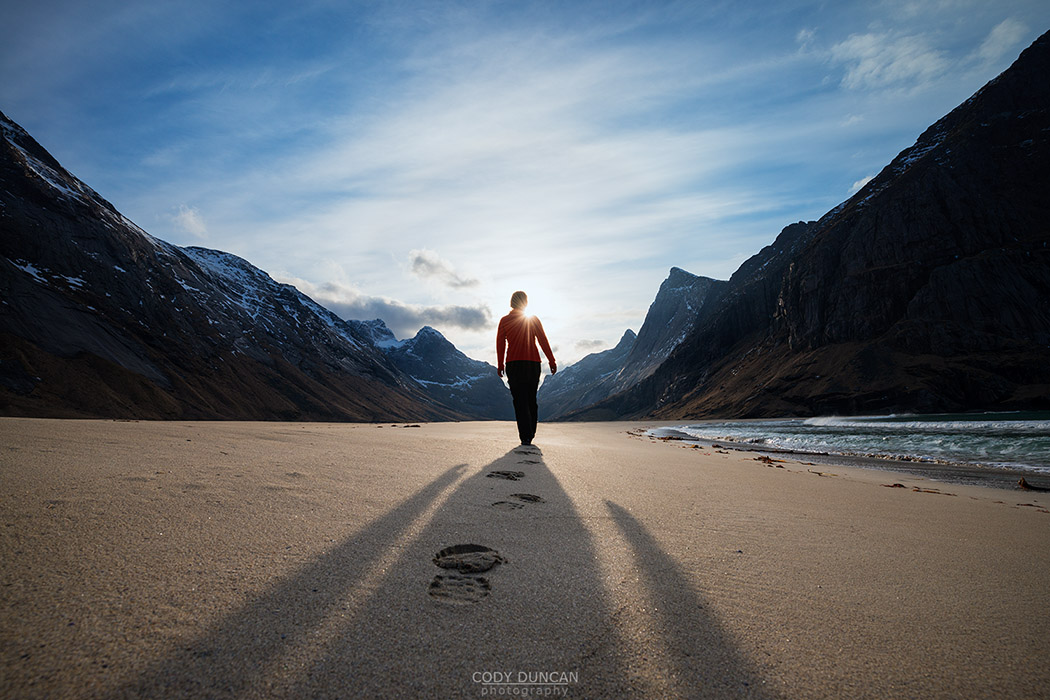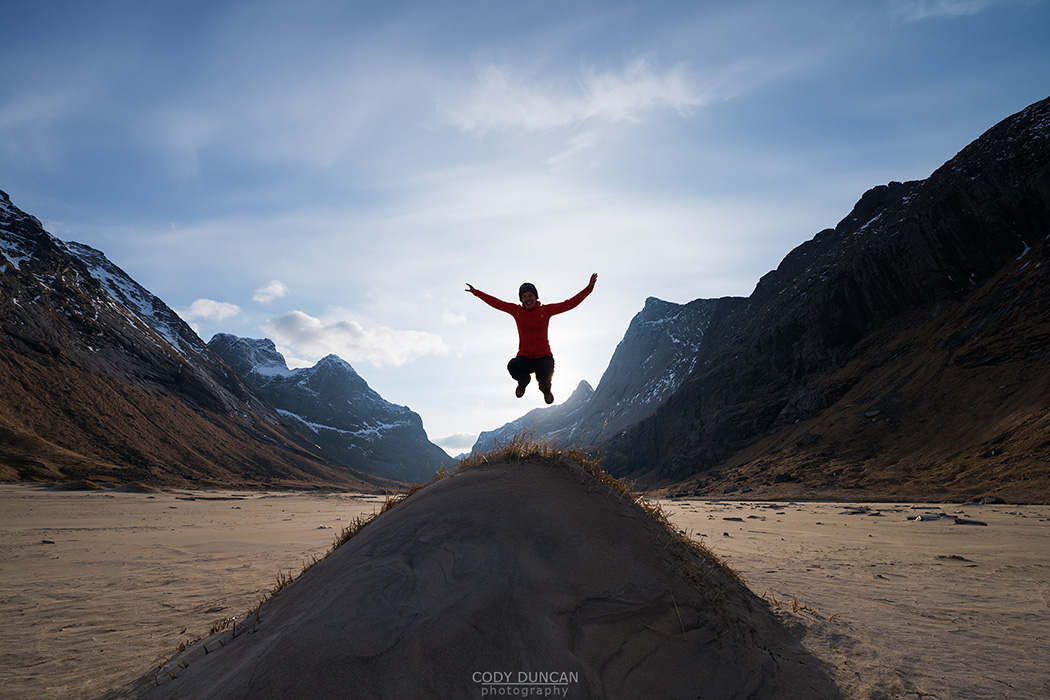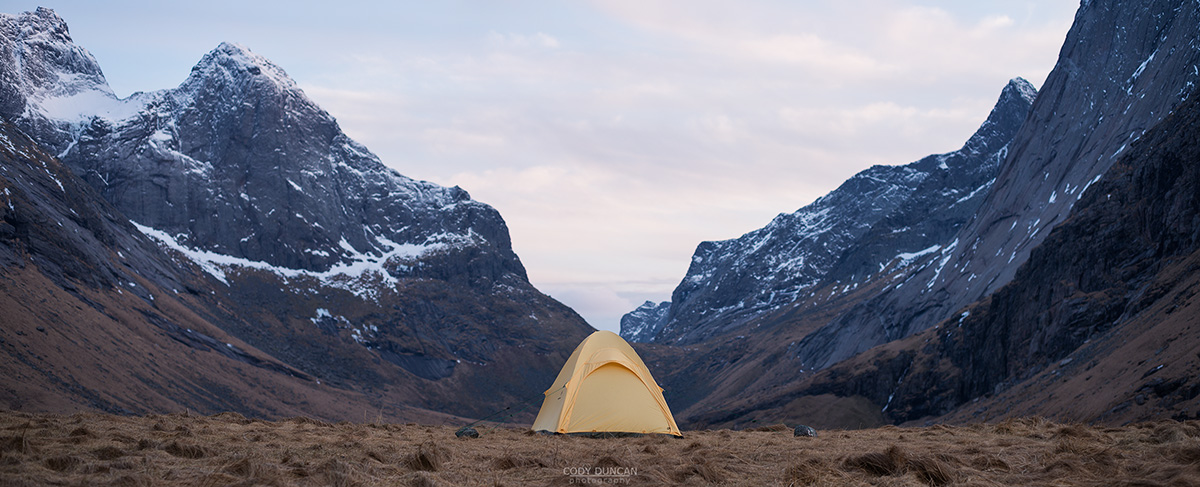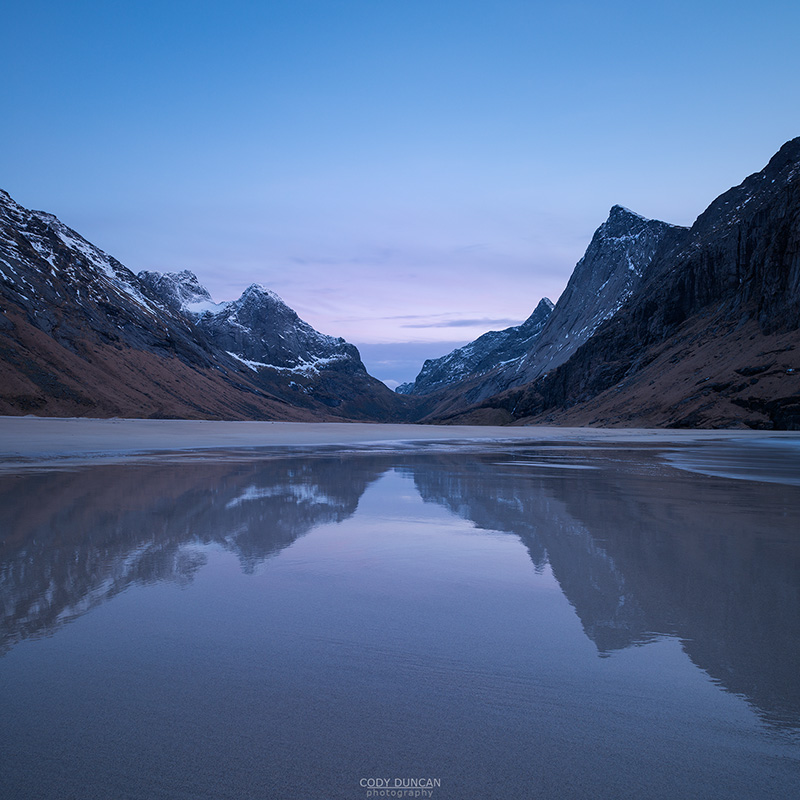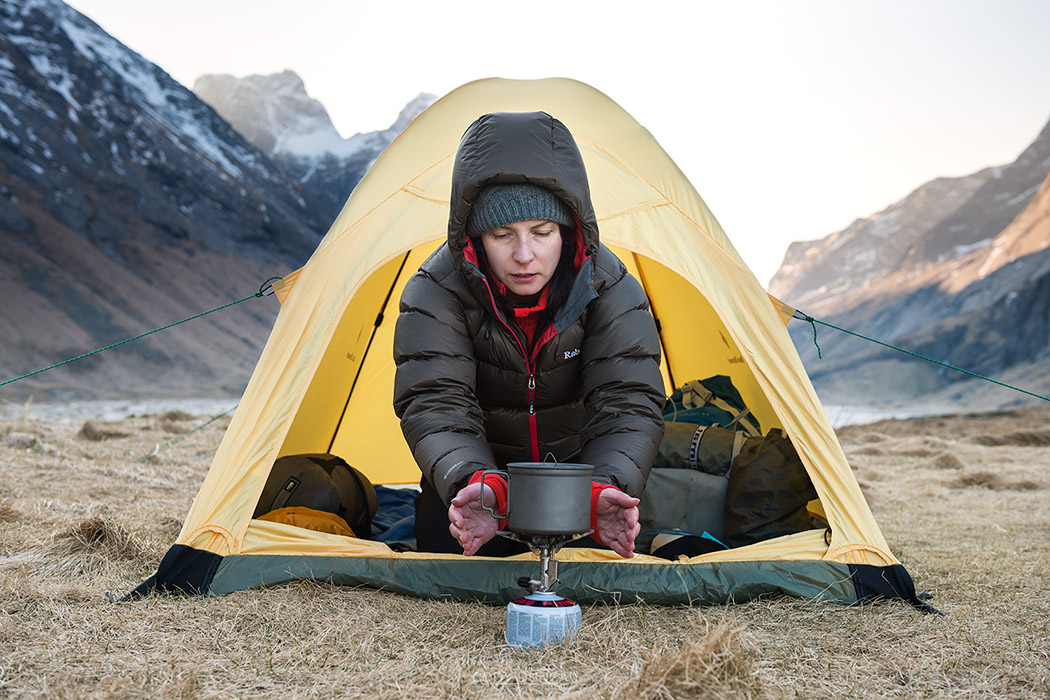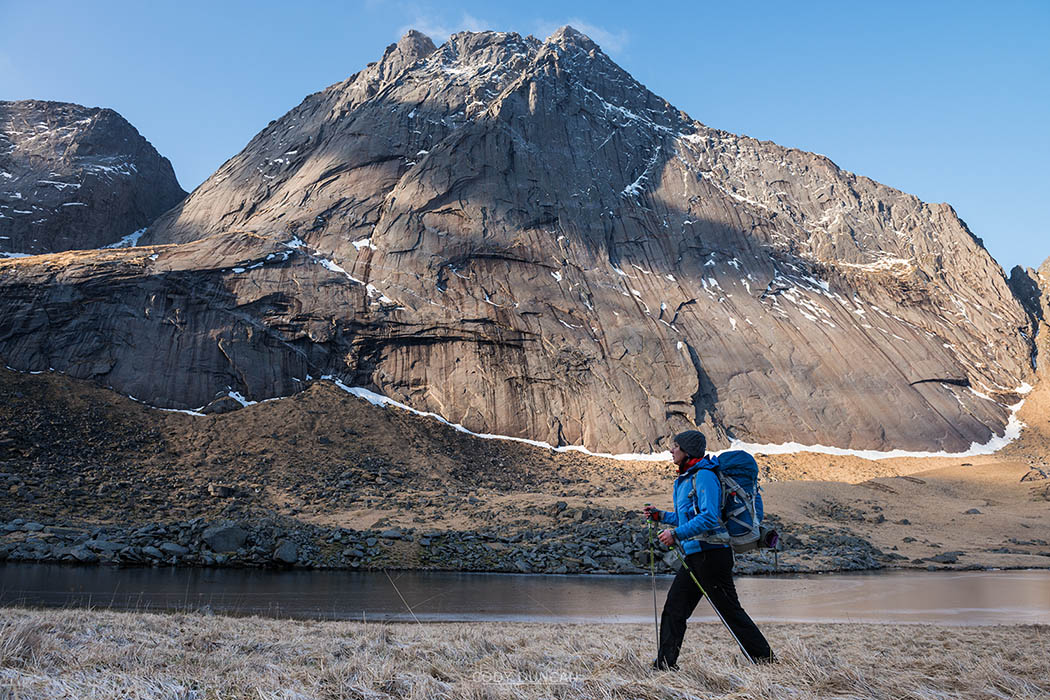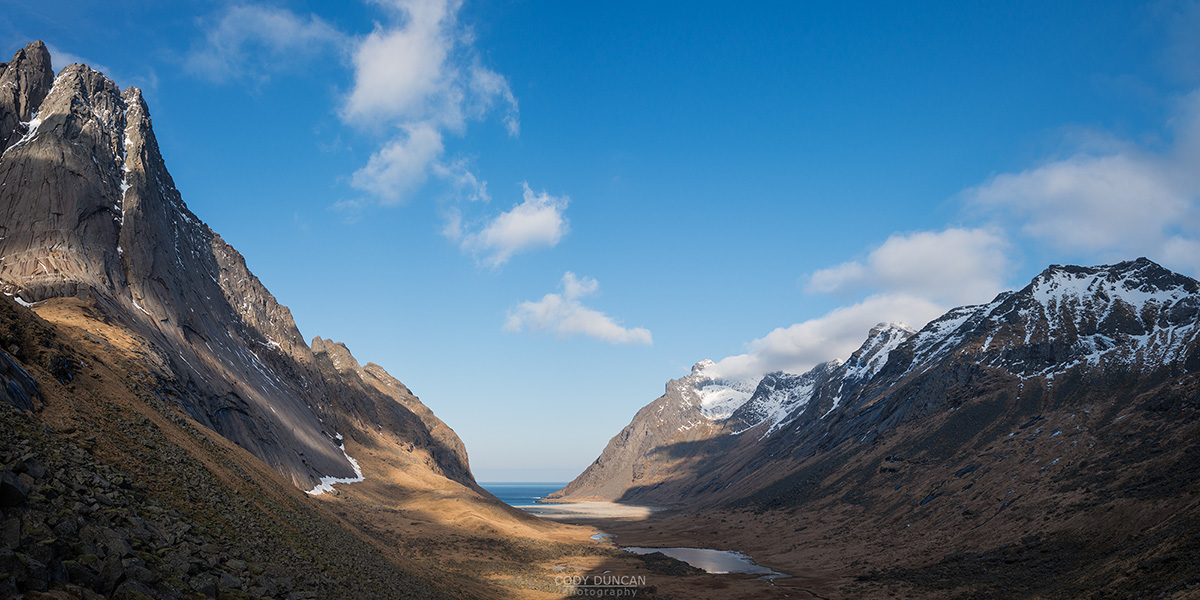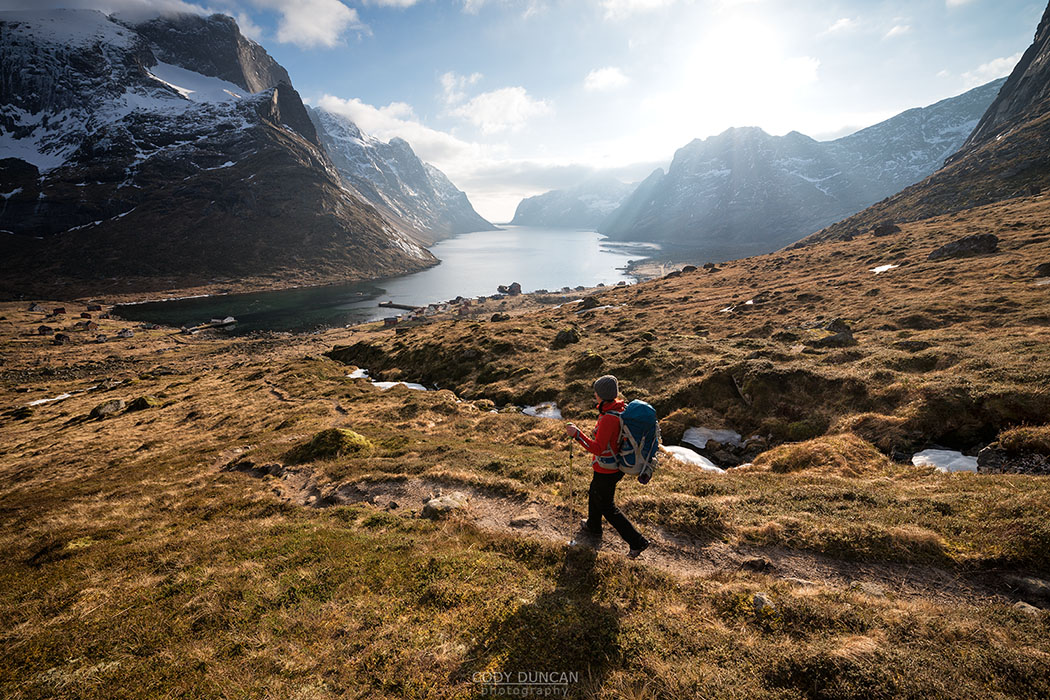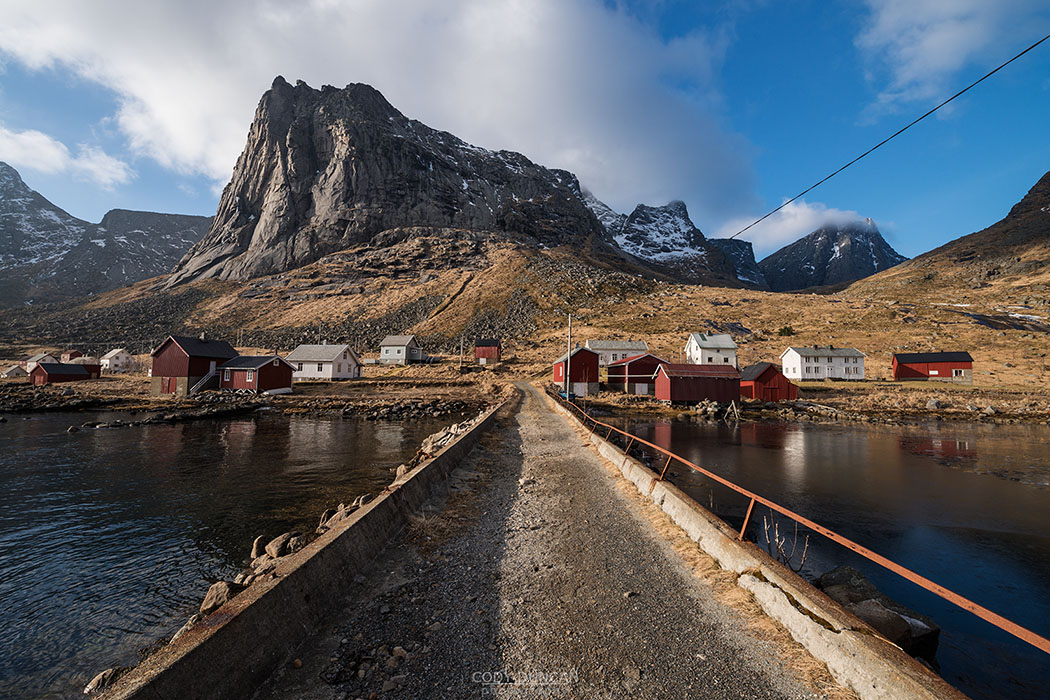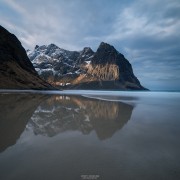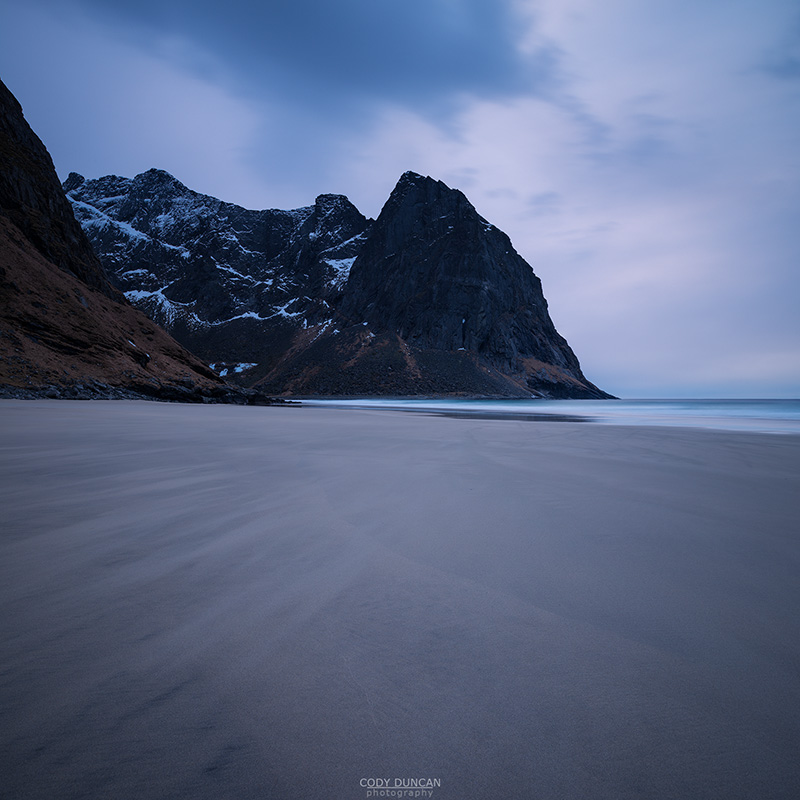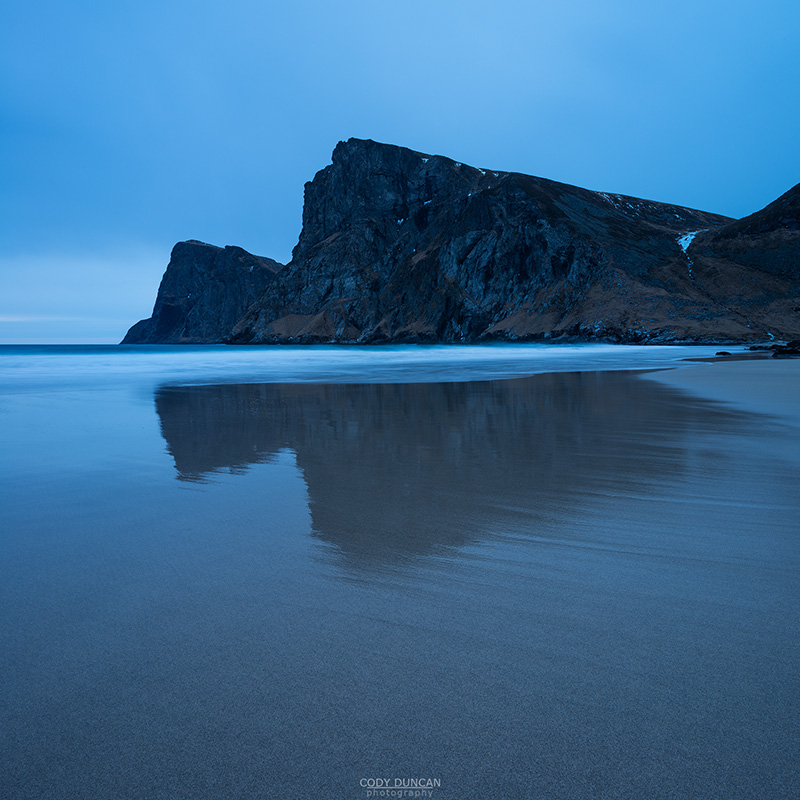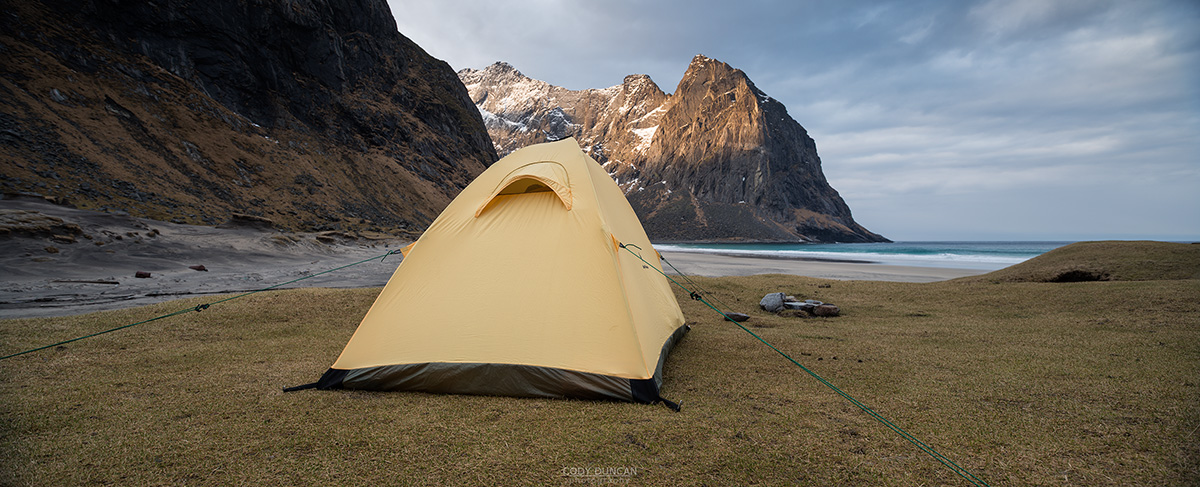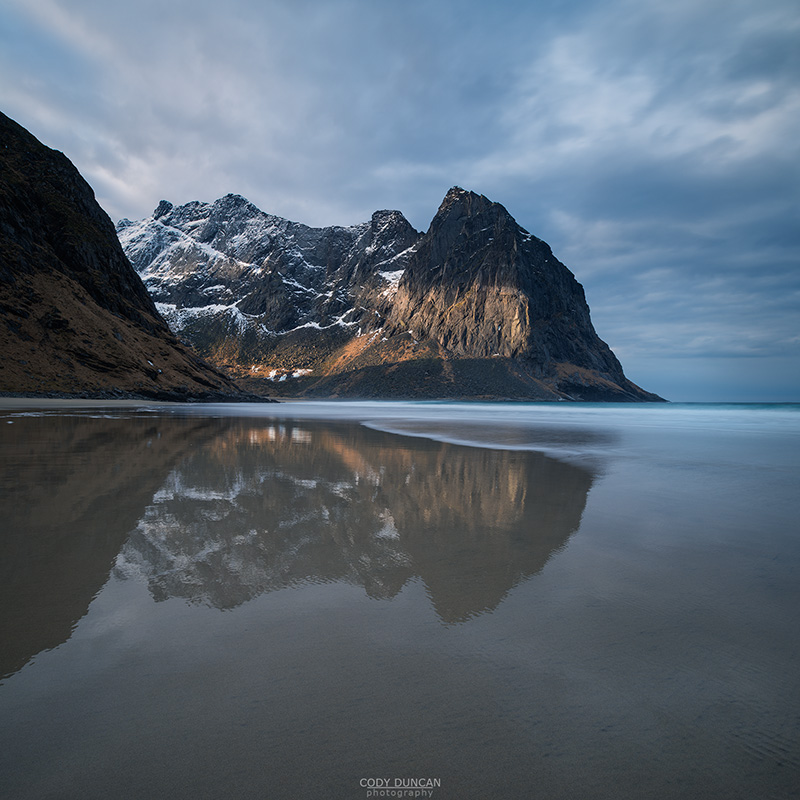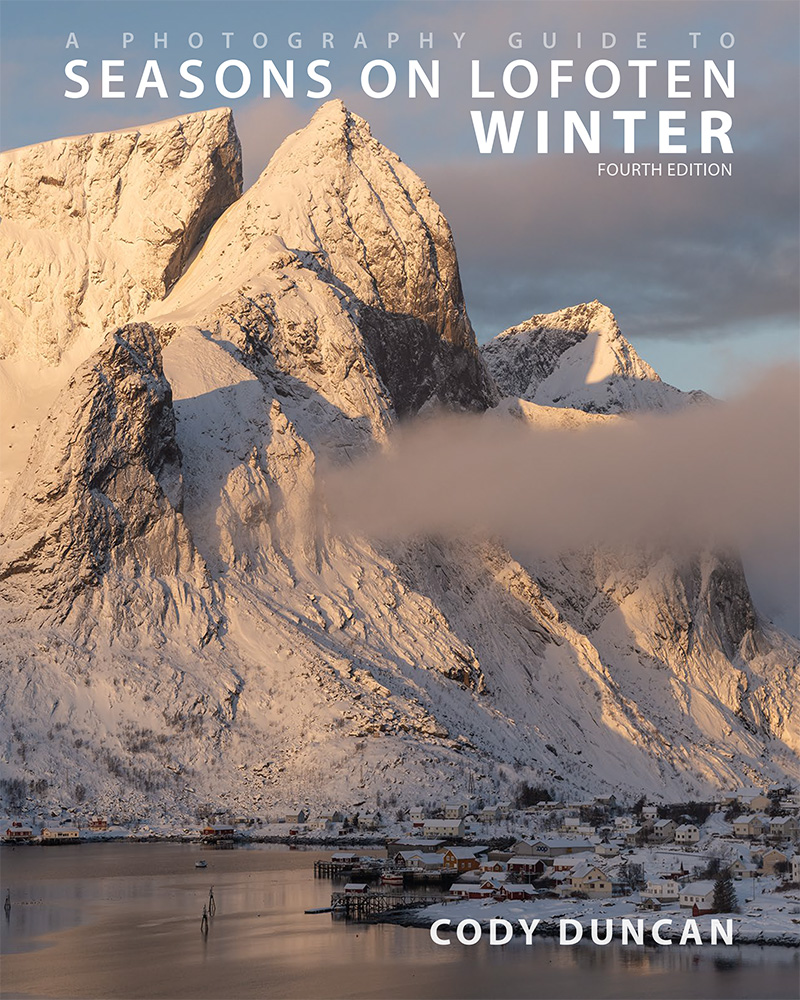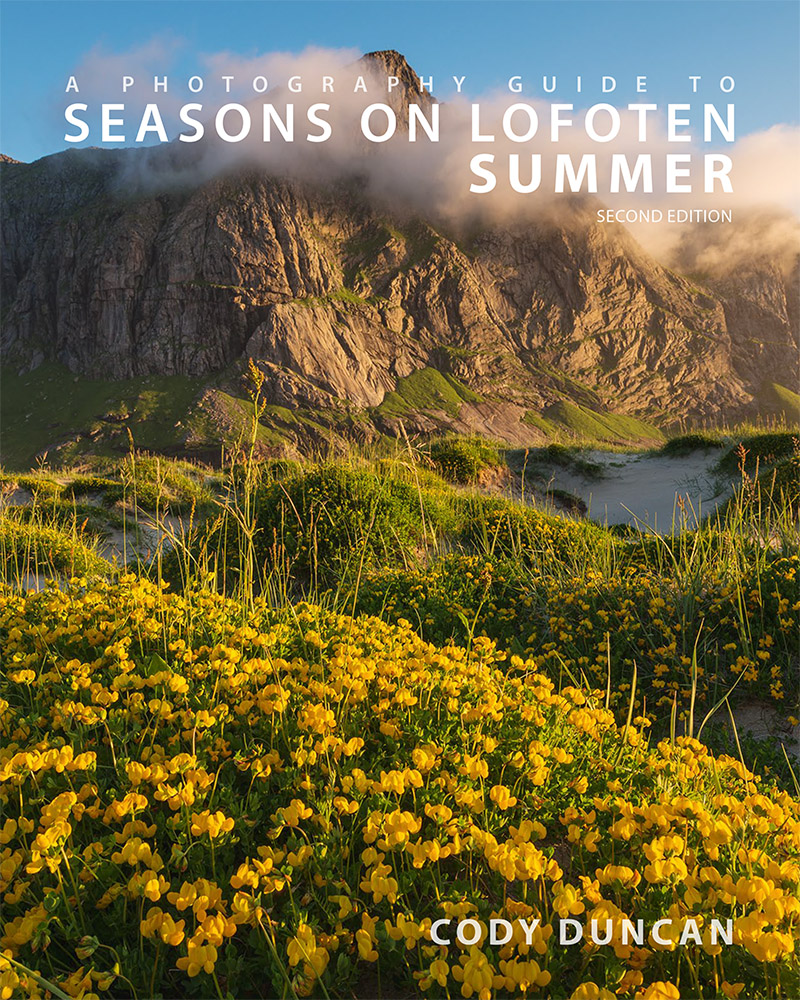Poland – Tatra Mountains – Part 2
Photo: Nearing the summit of Koscielec, Tatra Mountains, Poland. May 2014
Perhaps there had been too many beers Friday night in Zakopane, so it was a slow start to get moving on Saturday morning. Eventually the four of us were loaded into the car and on the way to the trailhead for the Five Lakes Valley in the Polish Tatra mountains.
Some roadworks led to some detours which extended the drive time. But at some point we decided to call the hut to make sure there was room. It was May, early in the season and a questionable weather forecast, but better to be safe. At some point in the last year or so, rules changed in some of the huts: from – always having space, even if you sleep in the dining room, to – hut is full, you need to have a room.
Pulling off the road in one of the few places with phone reception, we finally contacted the hut. Full. Shit! Next try was to Morskie Oko hut. Also Full. Double shit! There went those plans.
Having a map with me, I suggested we try Murowaniec hut, located on the ‘front’ side of the mountains, a few hours hike above Zakopane. Luckily there were beds available. And so a couple hours after we left Zakopane, we were driving back into the town to begin our hike.
The suspect weather had cleared into a nice sunny day by the time we finally got onto the trail, well, more of a fairly well worn path through the forest – the Tatra are a popular hiking destination. Sometime afternoon we finally arrived at Murowaniec hut to a scene I am familiar with from hiking the Alps, benches of people sitting in the sun eating home cooked food with a glass of beer or two. The food did smell good, and we were hungry, so after checking into our room for the night, we were ready to get something to eat.
Never having been to this part of the mountains, I wasn’t really sure what to do with the remainder of the day. I had been up on Kasprovy Wierch, so wasn’t really interested in hiking up there again, and it looked really crowded up on the ridge anyhow. There was still a lot of snow in all the gullies, so without winter gear we had a fairly limited list of possibilities. I pointed out an interesting looking peak above the hut, but it turned out not to have a trail to the summit, so a fairly difficult bushwhack through the dense dwarf pines would have been required. FInally, Jack pointed towards a tall, and from our angle, quite steep looking mountain, the 2155 meter high peak of Koscielec.
Still with a few spiderwebs of snow covering the face, it seemed like the best option, or at least we would go as far as we could. Backpacks bag on – overnight stuff – we hit the trail in mid afternoon.
While I appreciate the wilderness we have in the mountains of California, sometime I like being able to hike, for the sake of hiking. This is the experience in the Polish Tatra mountains. Criss crossed with a seeming endless series of sign posted trails, all are well build and maintained, something like mountain sidewalks.
After an hour or so of hiking we reached a small pass at the base of the mountain. The angle didn’t look too bad anymore, but I could tell we’d have a few sections of snow to negotiate.
The next hour was spent going up, up, and a bit more up, as the trail wound its way higher on the mountain. For the most part the route was simple going, with maybe a short scramble here and there. And of course, ever improving views as we came closer to the summit. It had been t-shirt weather thus far, but the winds picked up as we neared the summit so it was back into a fleece again, which was good, as I was probably getting pretty sunburnt anyhow!
About five o’clock, with the sinking afternoon sun we arrived at the summit. Wonderful views in every direction, but especially towards the 2301 meter peak of Swinica, still covered with a healthy layer of snow.
We took our time on the summit as the weather was near perfect before we eventually figured it was time to head back down. Before leaving the hut, we noticed a sign saying, ‘kitchen closes at 21:30.’ Without further inquiry, we figured this would be the last time to order dinner. A dinner I was greatly looking forward to from my memories of my last trip to the Tatra!
Descent was a little more complicated than the ascent and took a little more time than I thought. The sky was growing dark as we arrived back at the hut a little before nine o’clock. I was somewhat shocked to see a full on party going on in the dining hall, even with a live band.
Now looking forward to a good meal, we went up to order, only to be informed that there was only one selection of soup available – a sauerkraut soup that I don’t care for very much. When asking about the 21:30 closing time, we were informed that was when the whole dining hall closed. Shit! 10 hours hiking in the mountains and I couldn’t even get dinner. I guess malted barley water would have to suffice, along with the remainder of my hiking food.
Luckily the presence of the live band meant the dining room stayed open later, so we could at least enjoy a few drinks, somewhat to the protest of the hut warden, who could have been doing good business with the full house crowd, but chose to close the bar, only returning sporadically and serving drinks when sufficiently harassed by enough people shaking money at her.
Sometime after 11pm my head finally hit the pillow. Jack and I had discussed some place of getting up for sunrise, maybe even hiking up Kasprovy Wierch, we would see. But by the early morning hours the hut began to creek and the windows bang in the increasing winds. With barely a hint of morning light I got up to checkout the sky. Fully grey, and the trees were doing quite a dance. At that, I was content to stay in my sleeping bag for a while!
A lazy hike out of the mountains and back to Zakopane followed. We headed to a place to grab lunch (another pizza for me) and as we headed inside, thunder began to rumble and rain fall. Good timing getting down the mountain I guess.
We got dropped of by Jack in Krakow, where I then ended up on a standing room only mini-bus, I was one of the ones standing, back to Katowice before a tram back to Chorzow.
Overall, not the trip planned, but a good one none the less. Zakopane is such a wonderful mountain town, and in the spring it is nice and green yet the streets, while still crowded, are not overly crowded. I wished I had had a few more days just to hang out there and enjoy a bit of mountain town life. Maybe next time…
Photo: Heading up the trail to Murowaniec hut, Tatra Mountains, Poland. May 2014
Photo: Afternoon nap outside Murowaniec hut, Tatra Mountains, Poland. May 2014
Photo: Hiking towards Koscielec, Tatra Mountains, Poland. May 2014
Photo: The 2155 meter high Koscielec rises in the distance, Tatra Mountains, Poland. may 2014
Photo: On the summit of Koscielec, Tatra mountains, Poland. May 2014
Photo: Panoramic view from the summit of Koscielec, Tatra Mountains, Poland. May 2014
Photo: Murowaniec hut, Tatra Mountains, Poland. May 2014
Photo: Resting outside a mountain cabin, Tatra Mountains, Poland. May 2014

